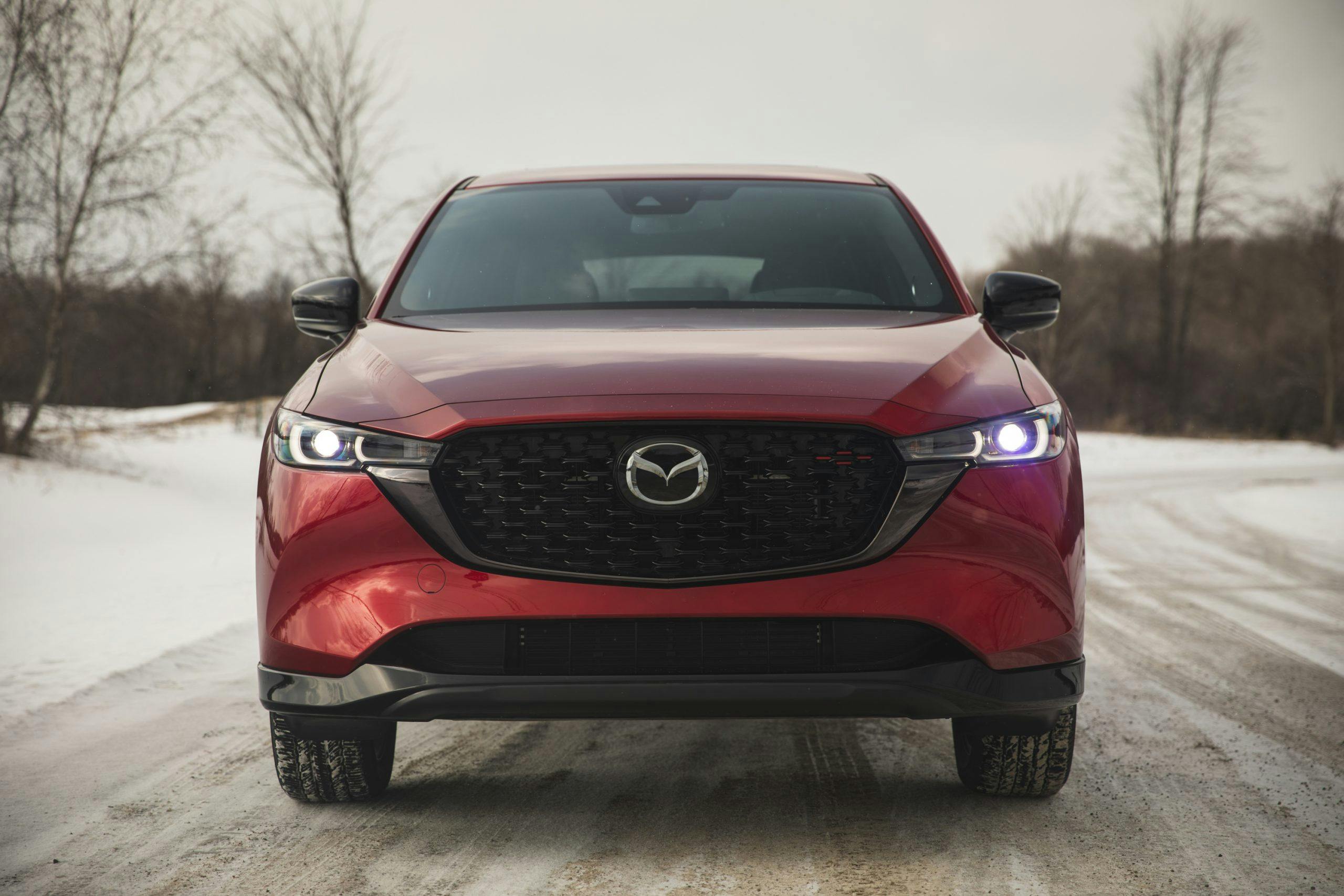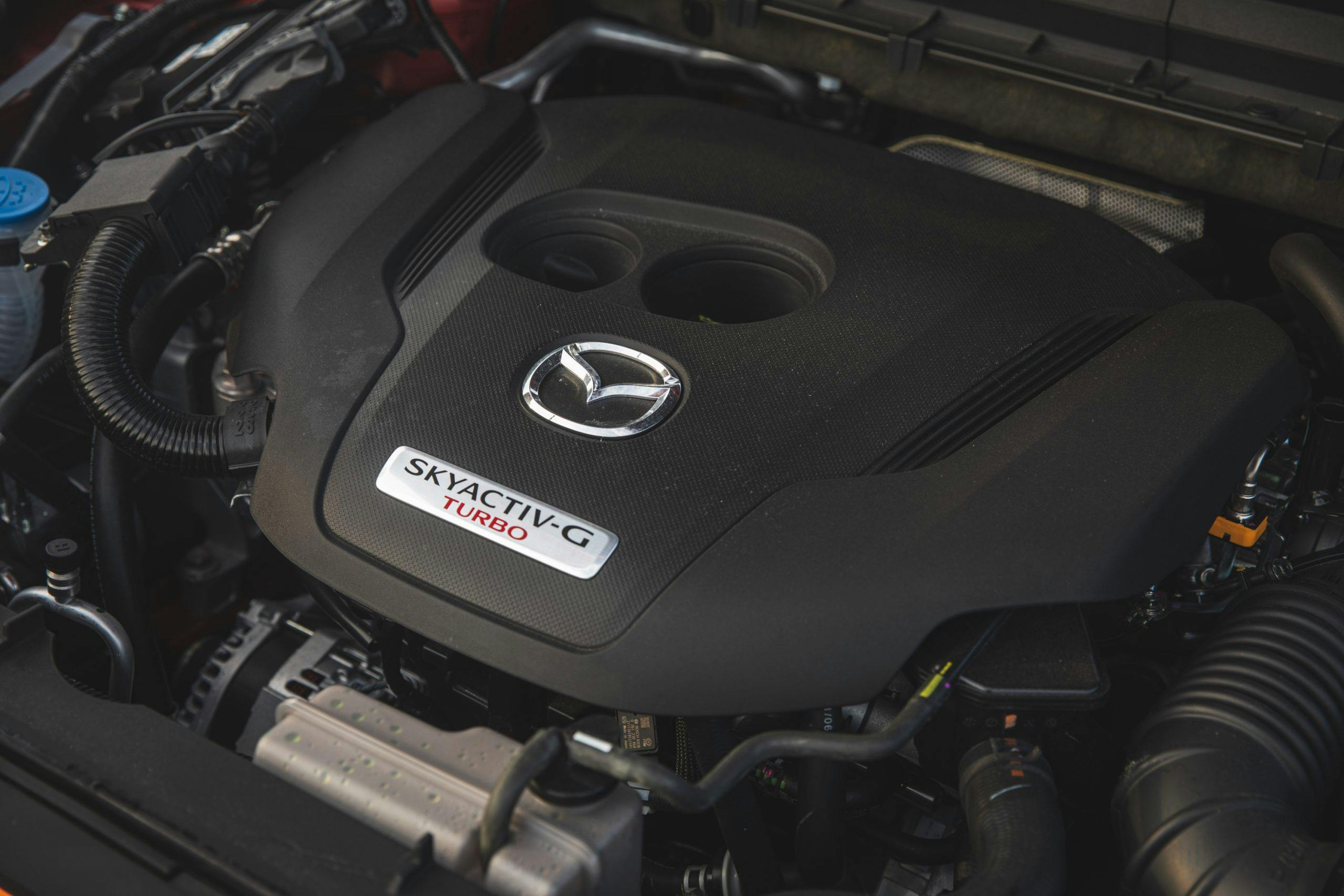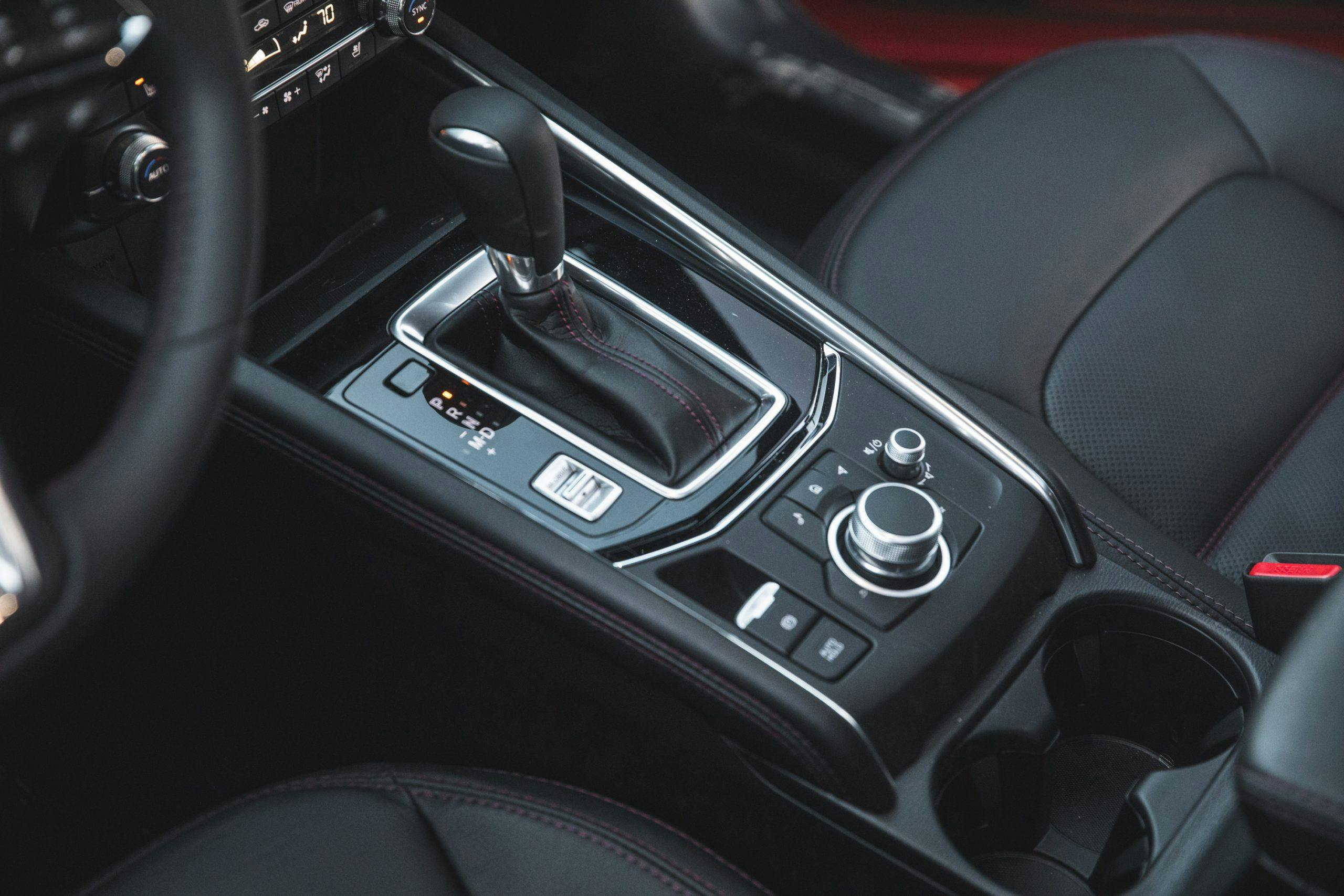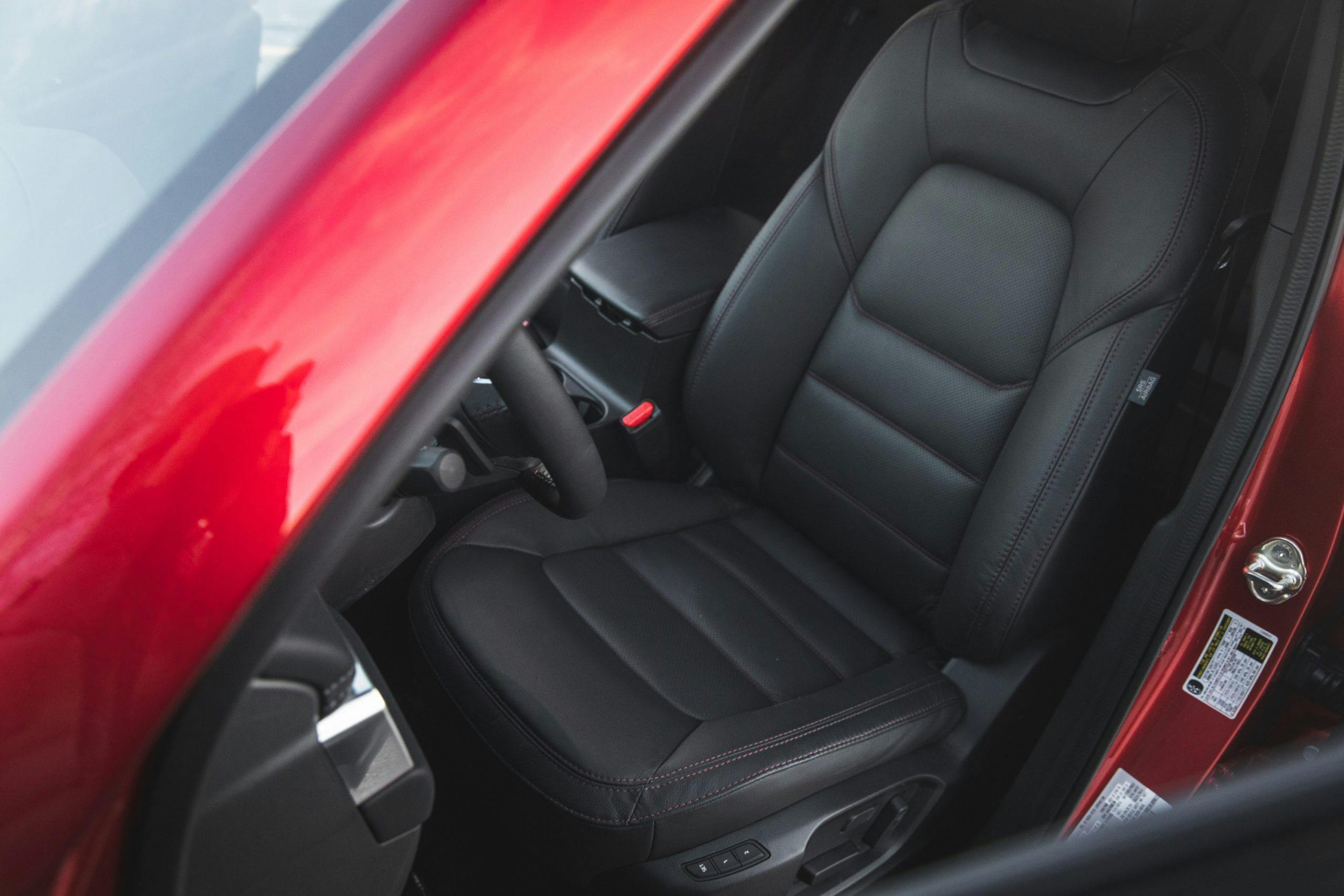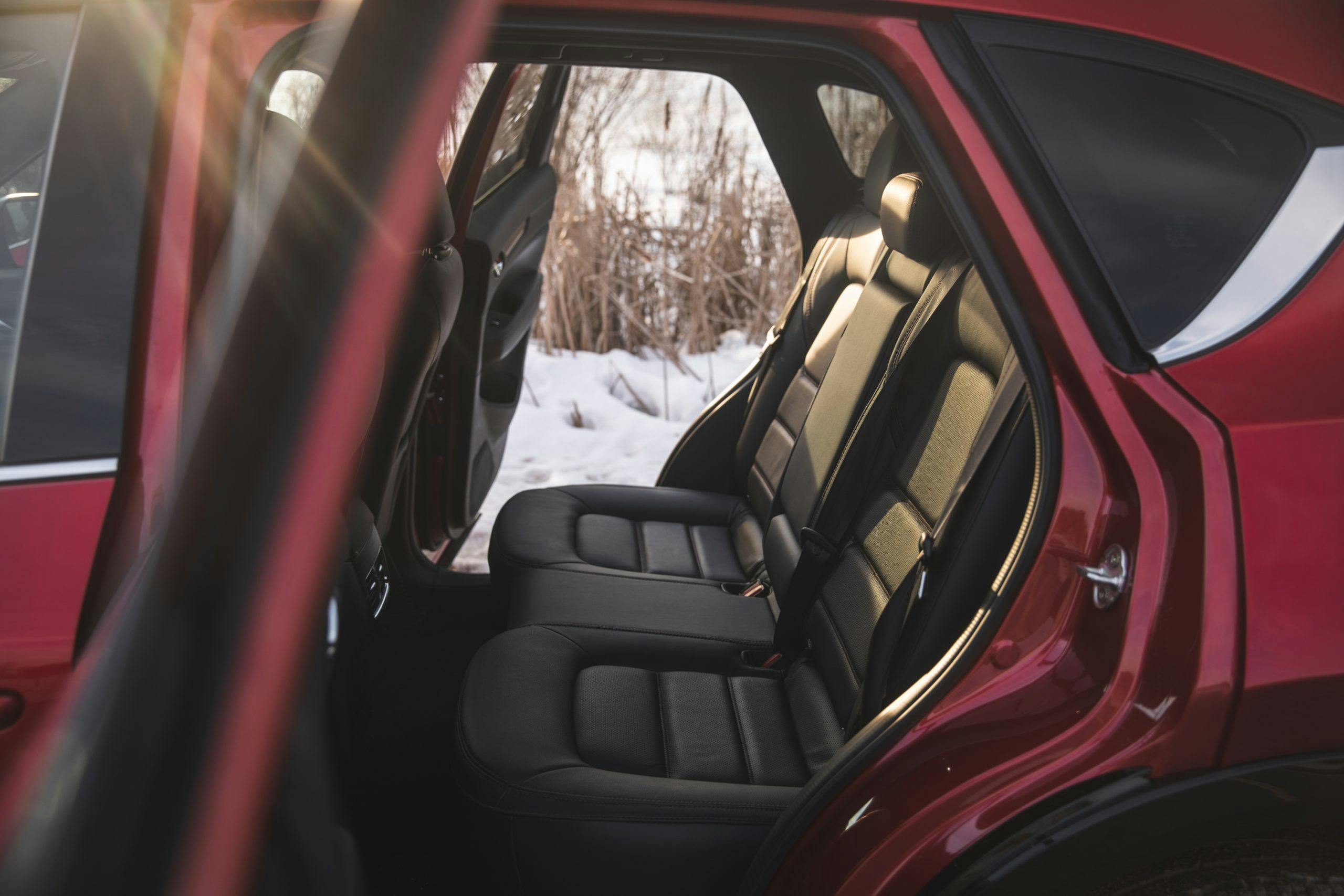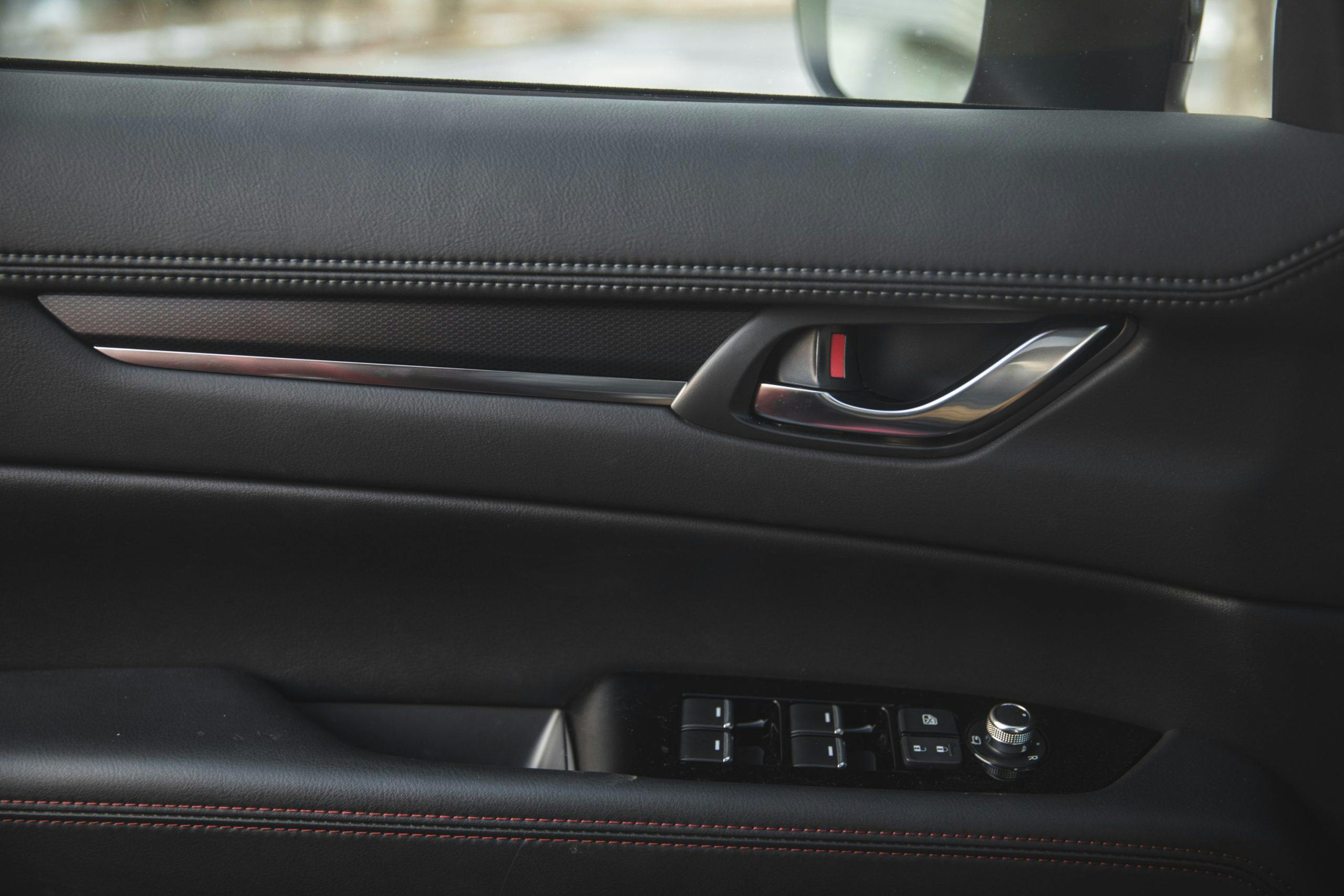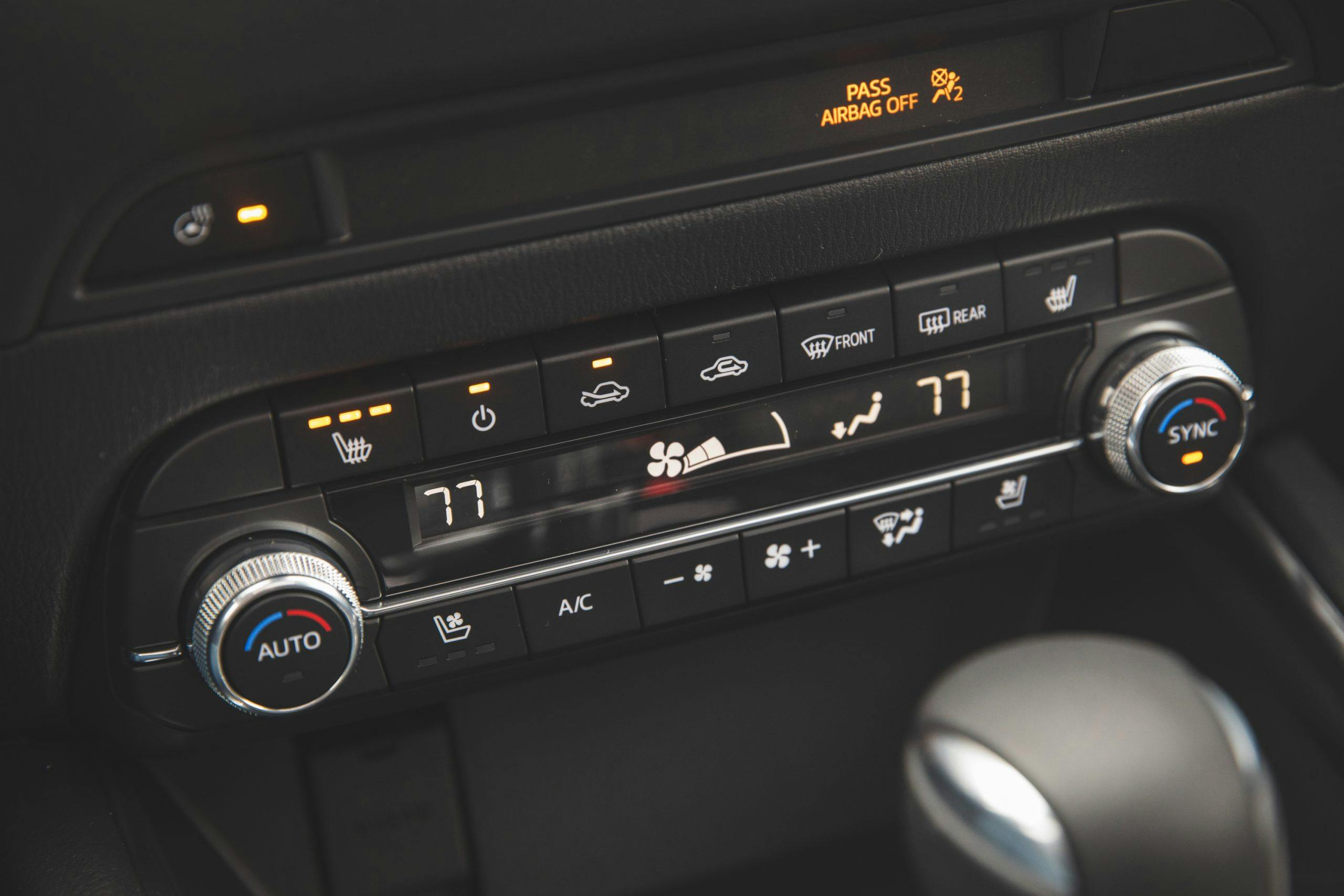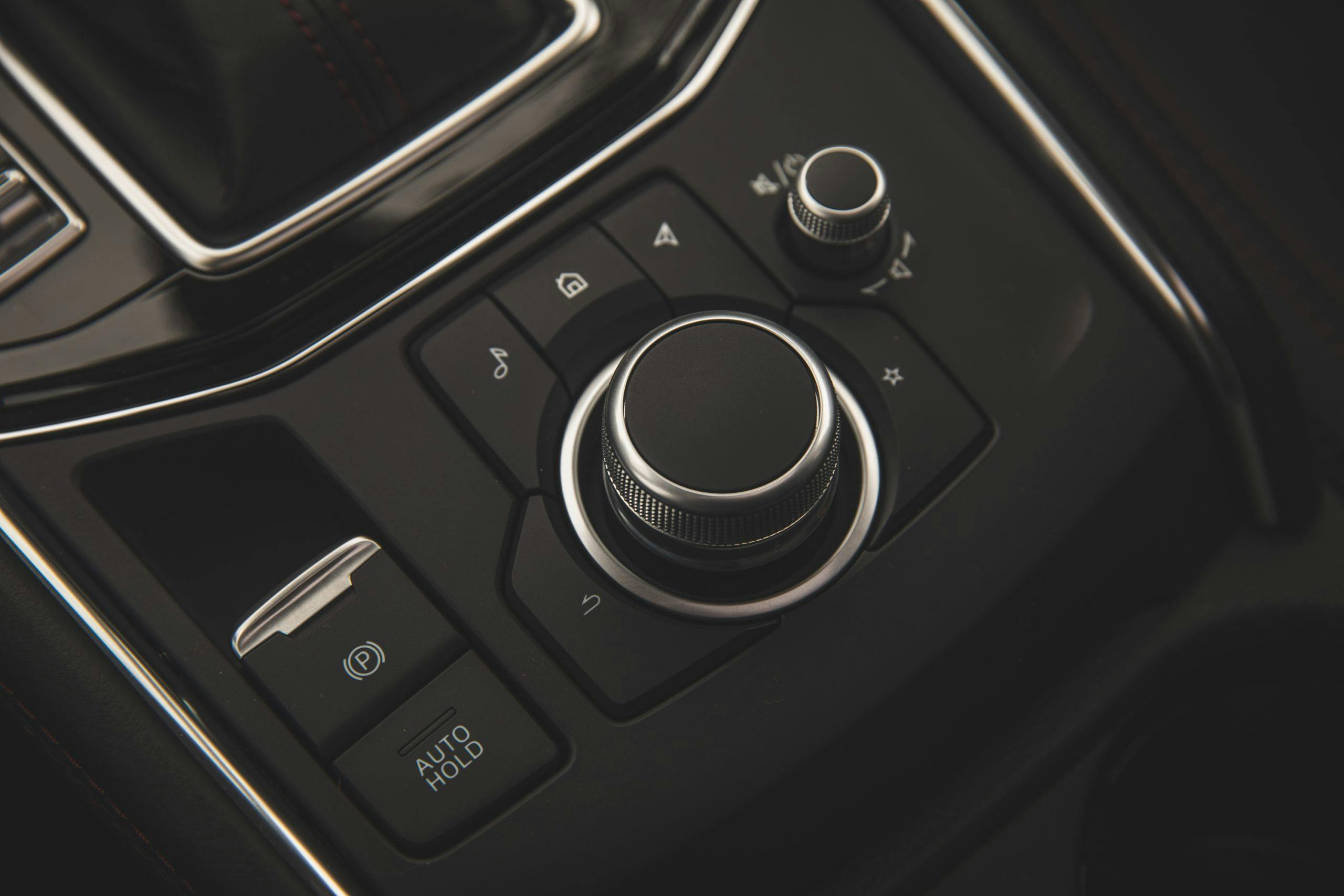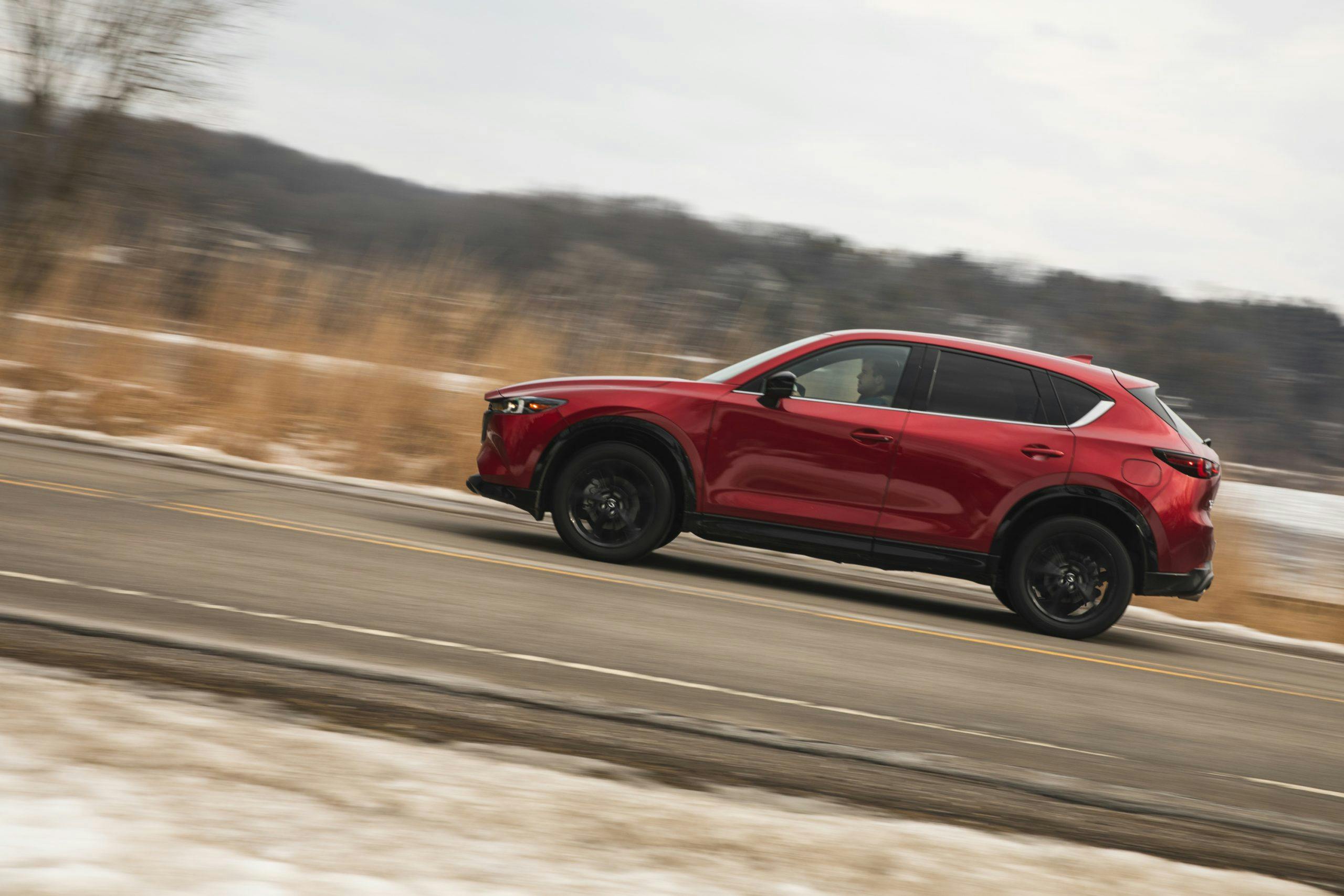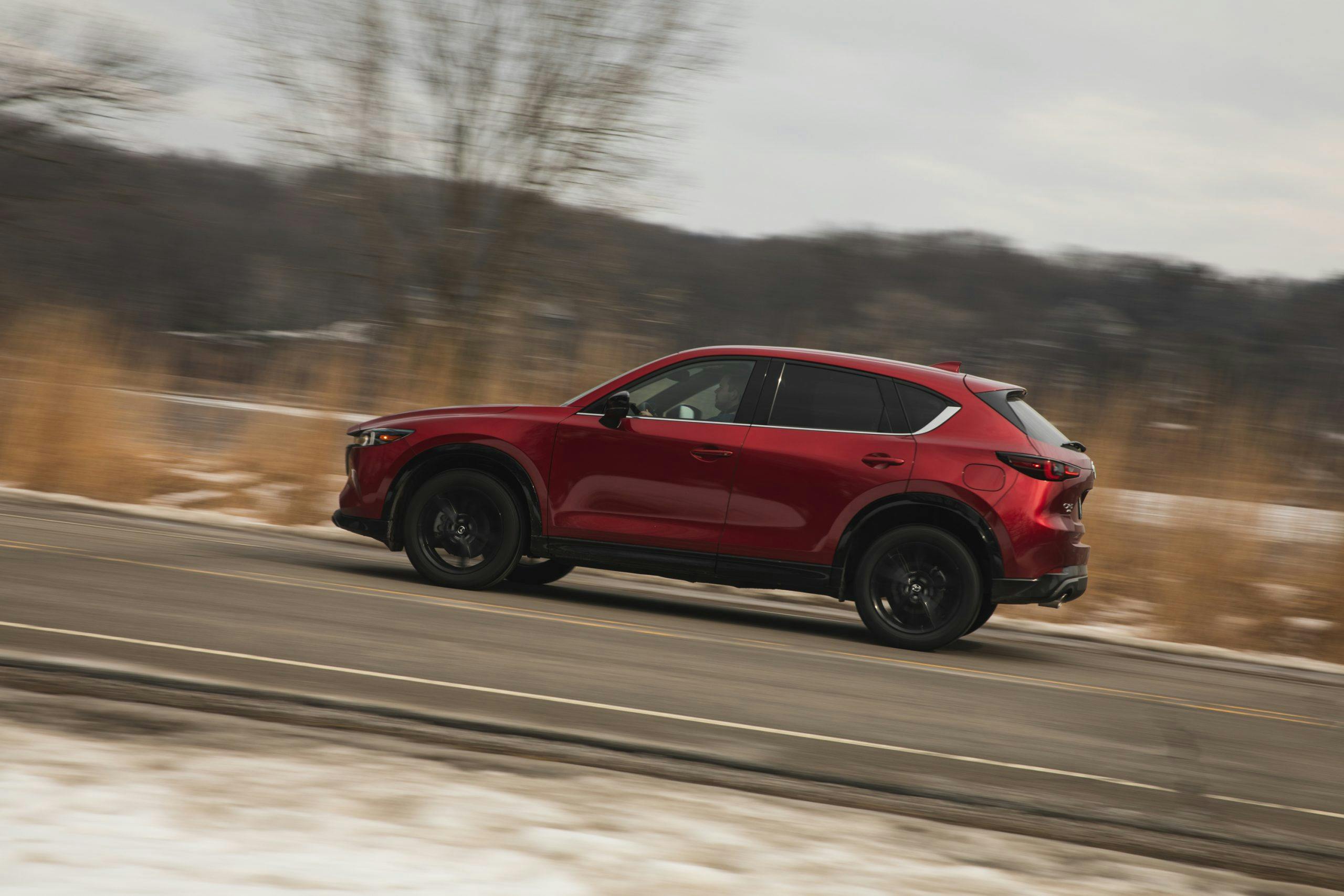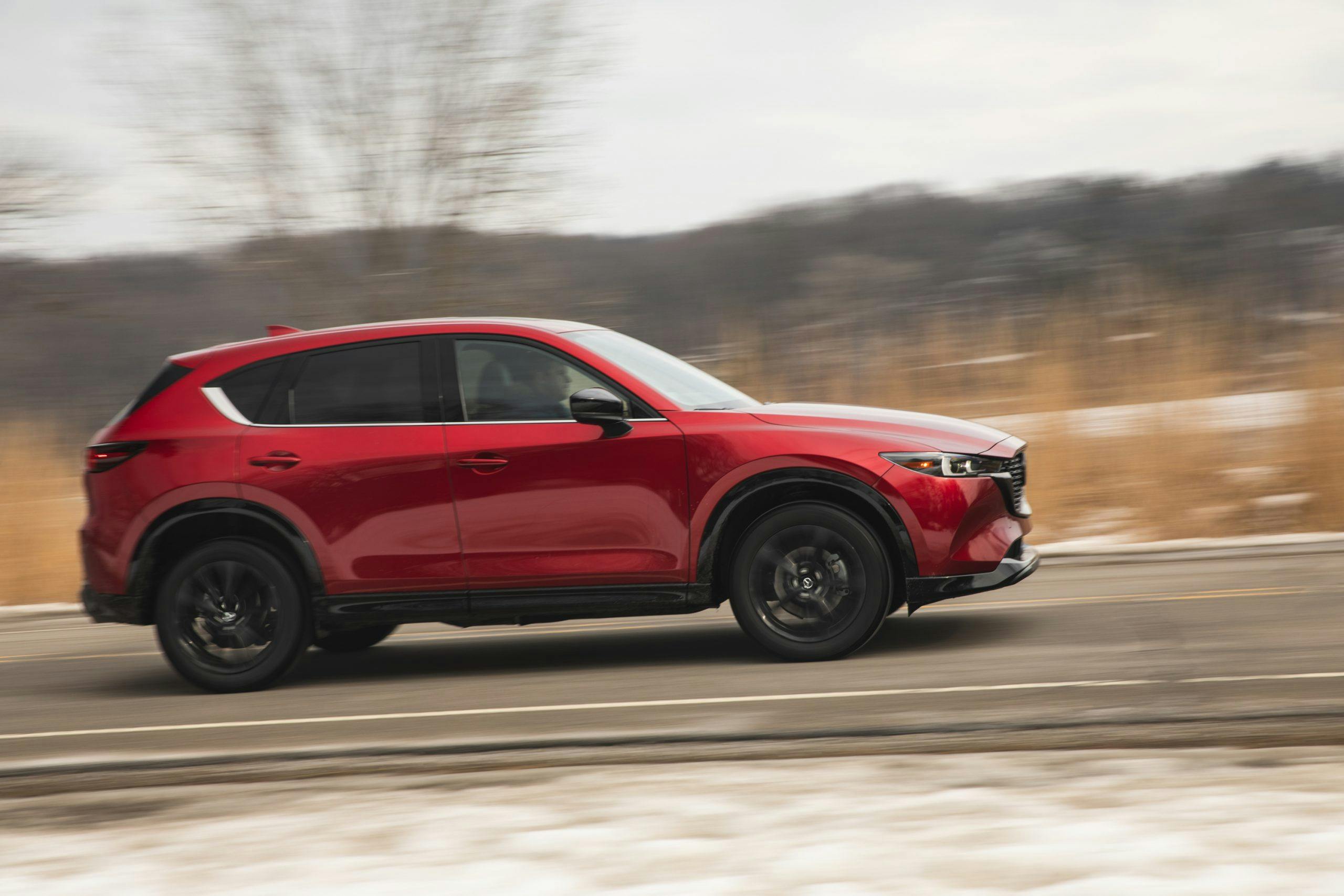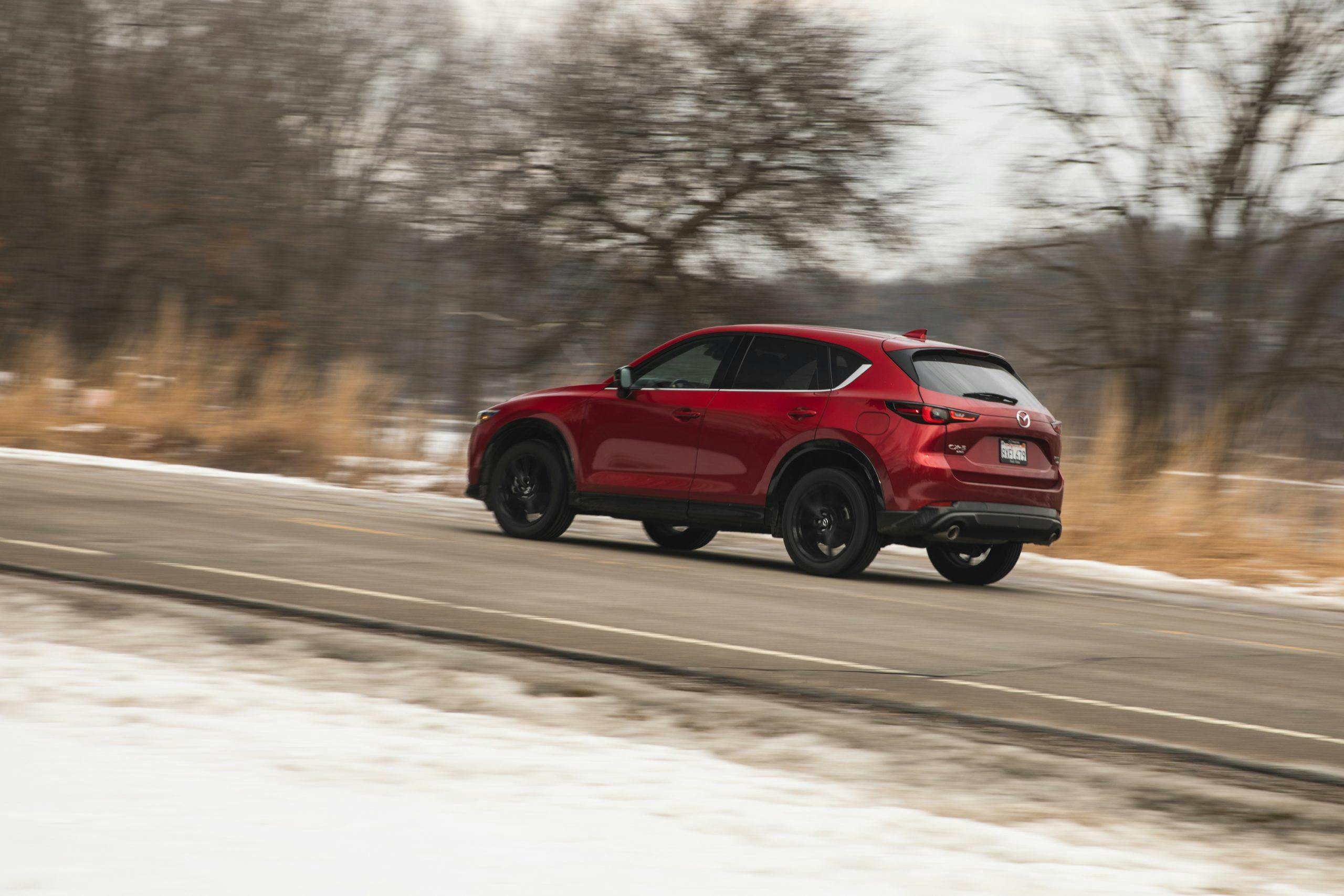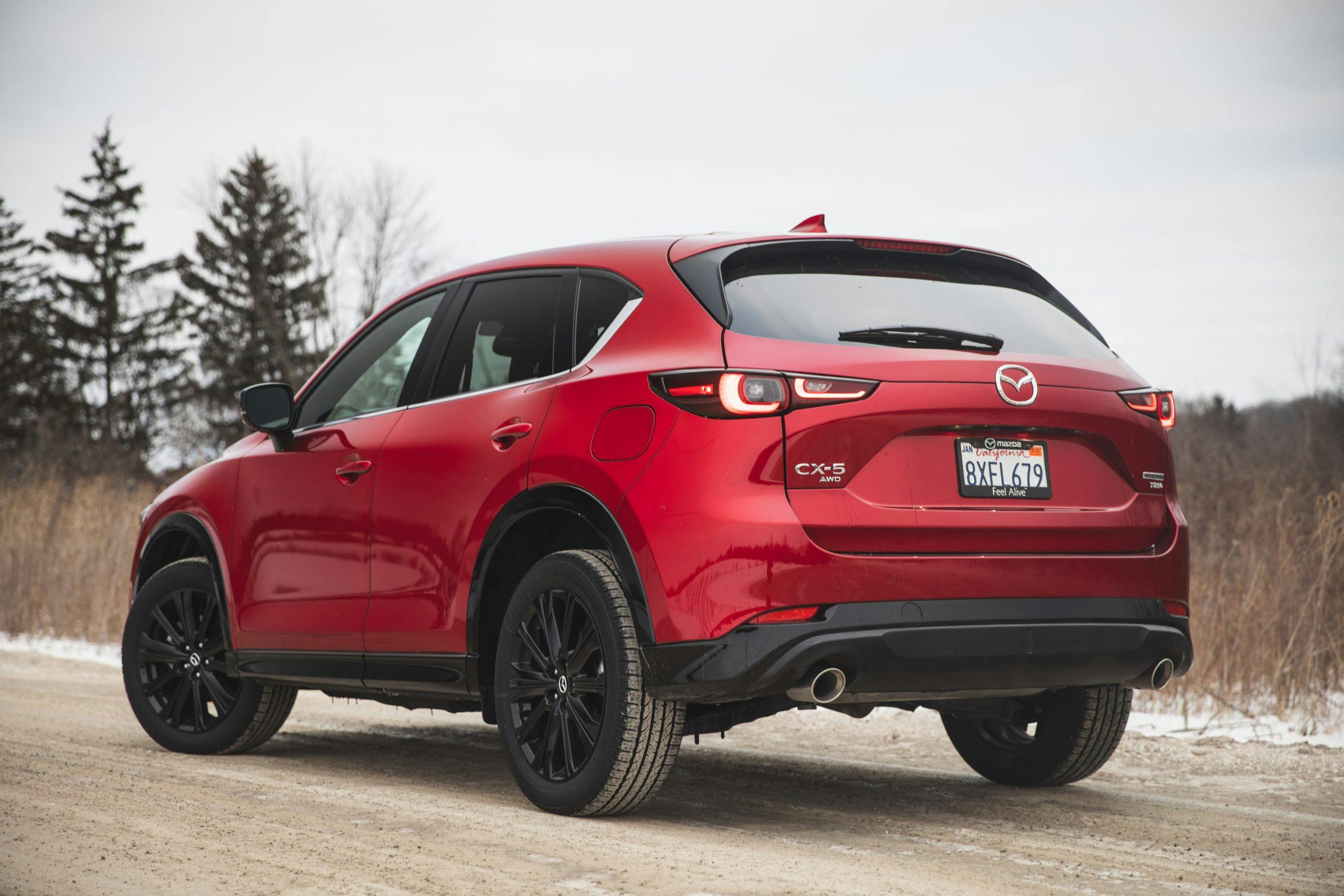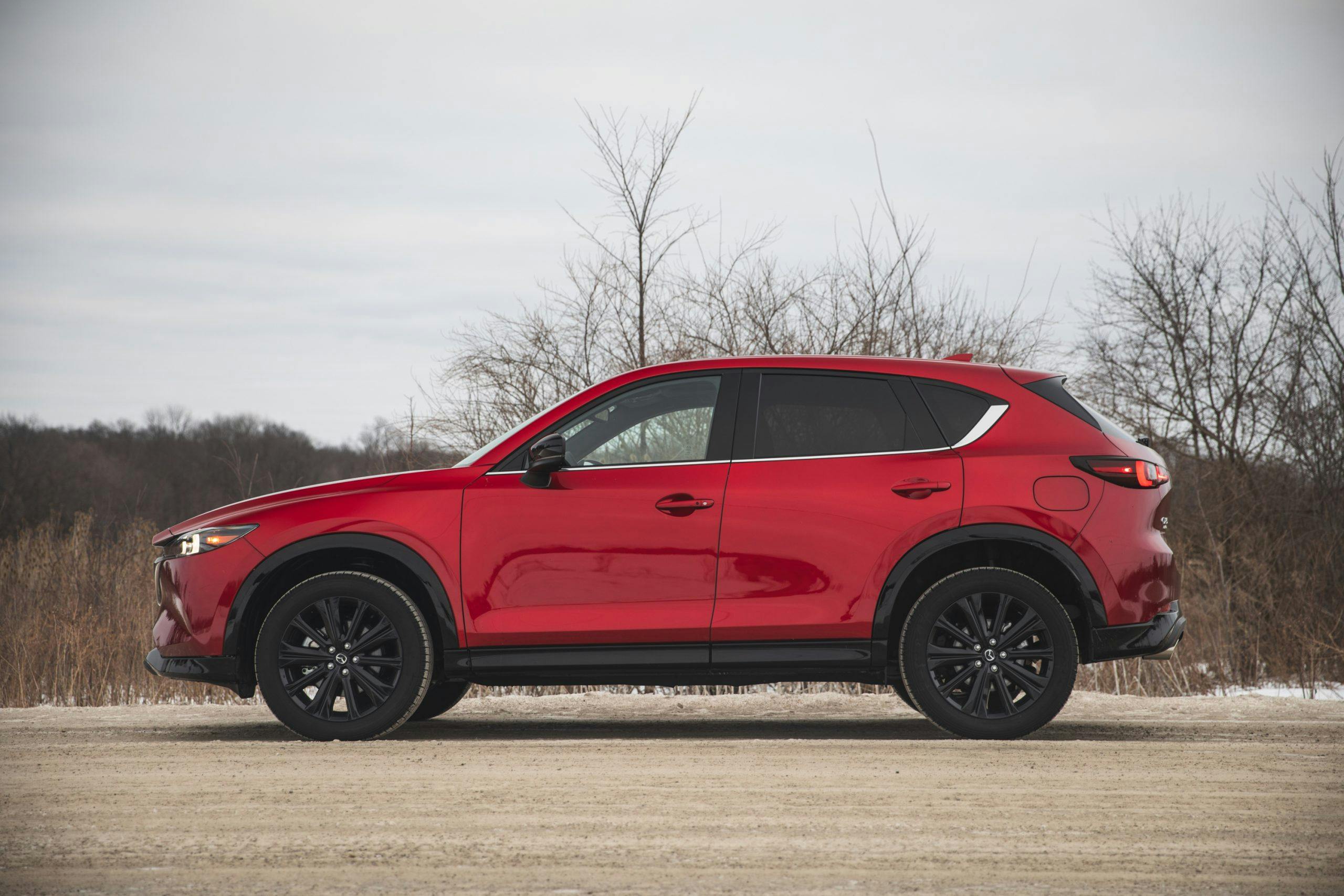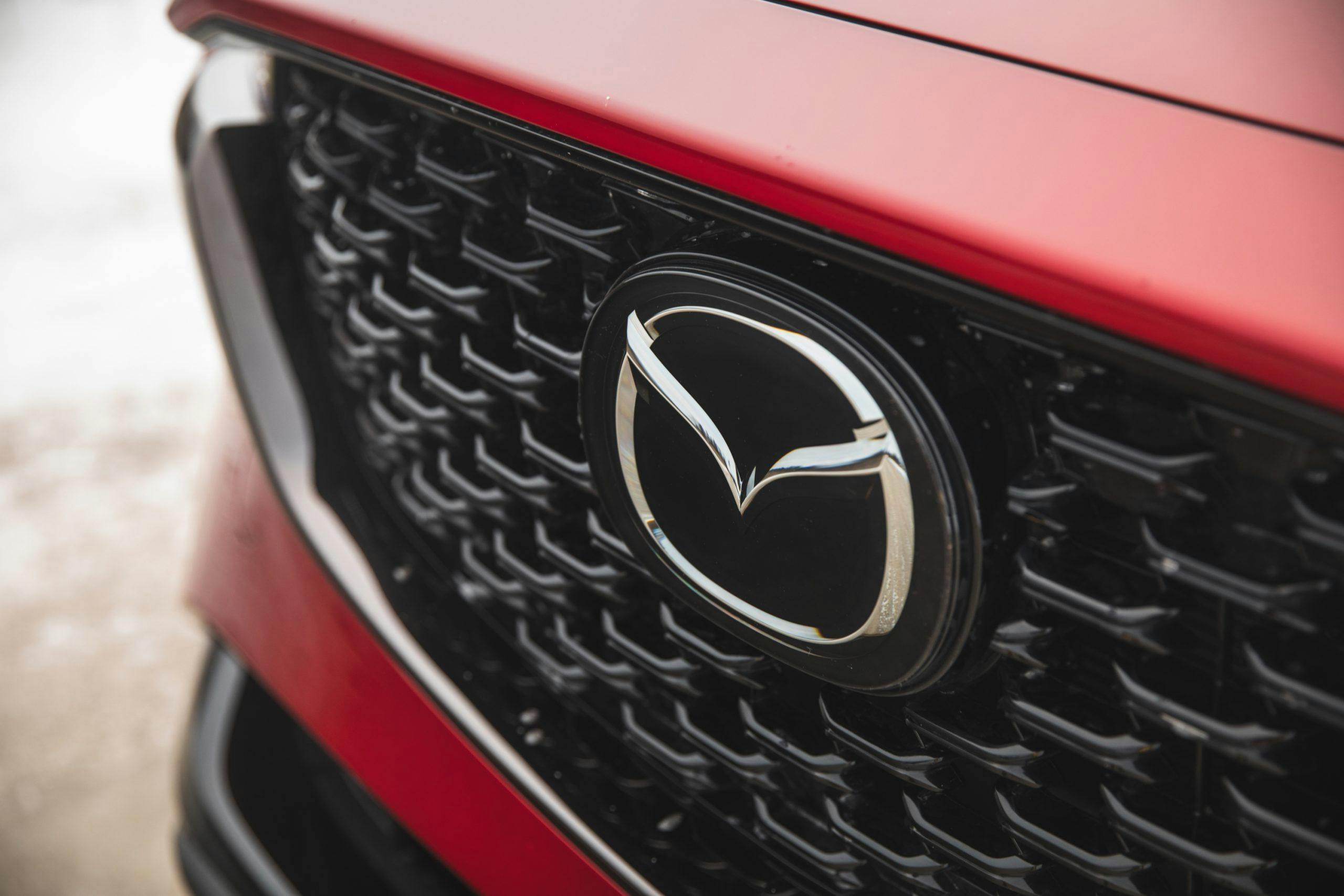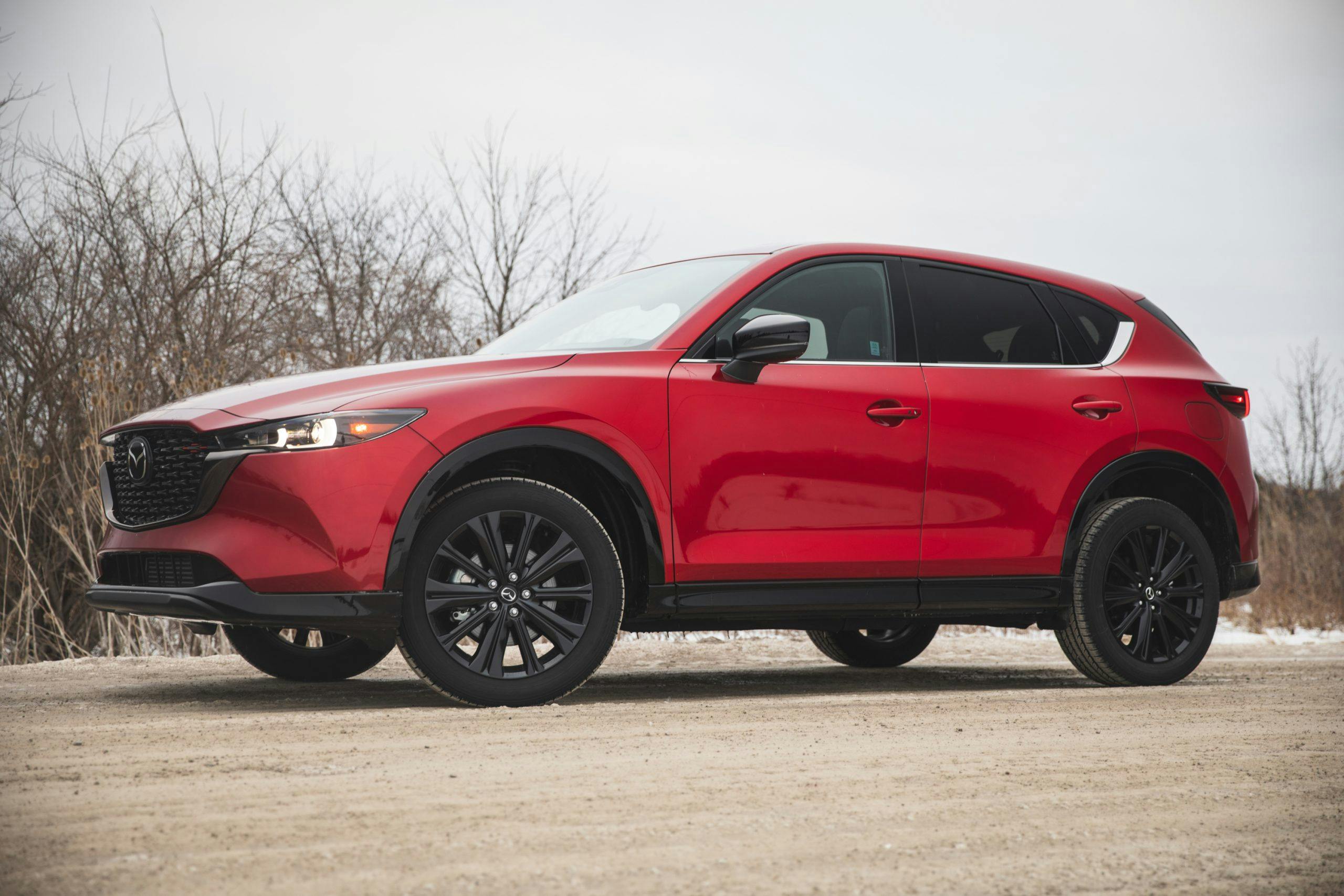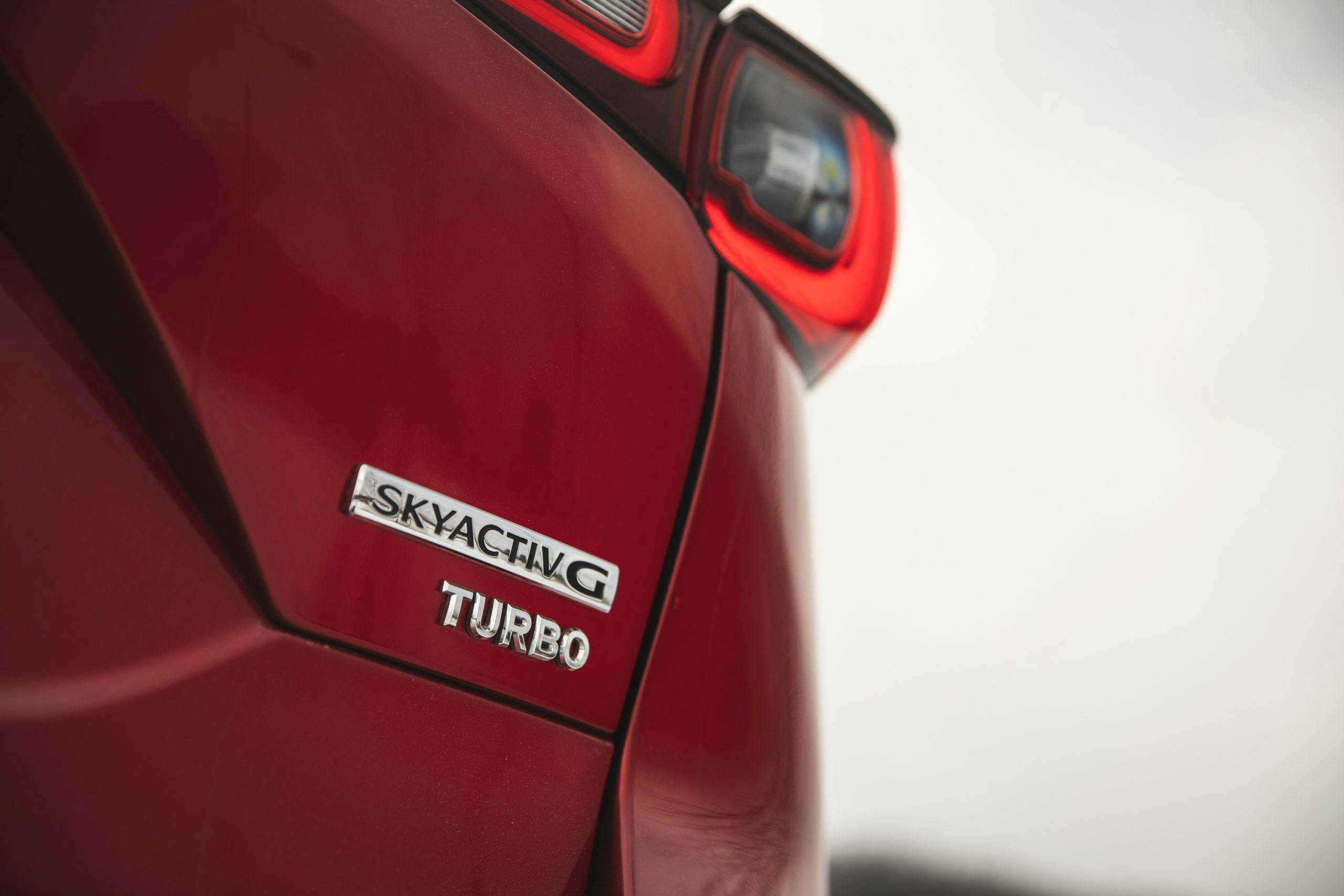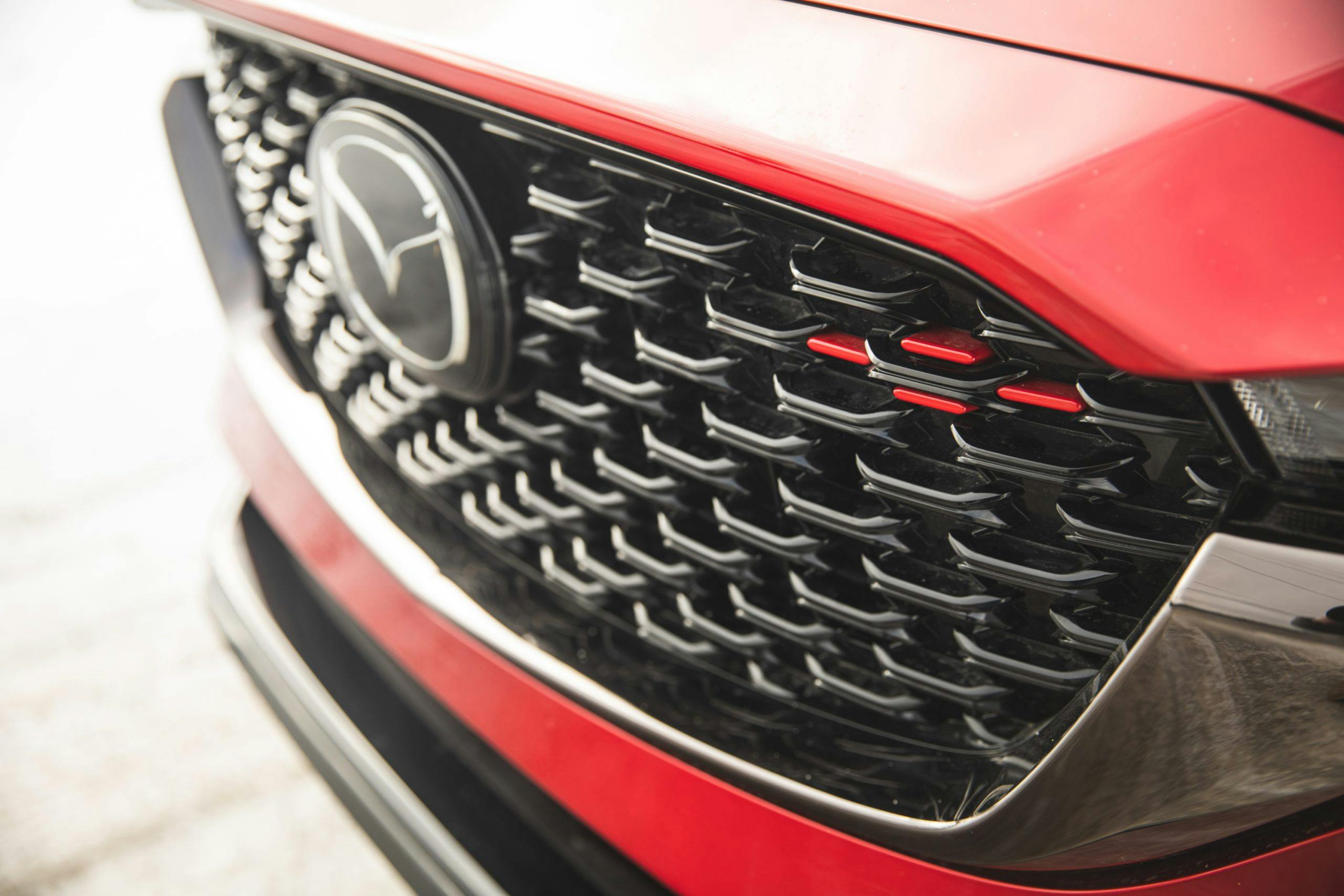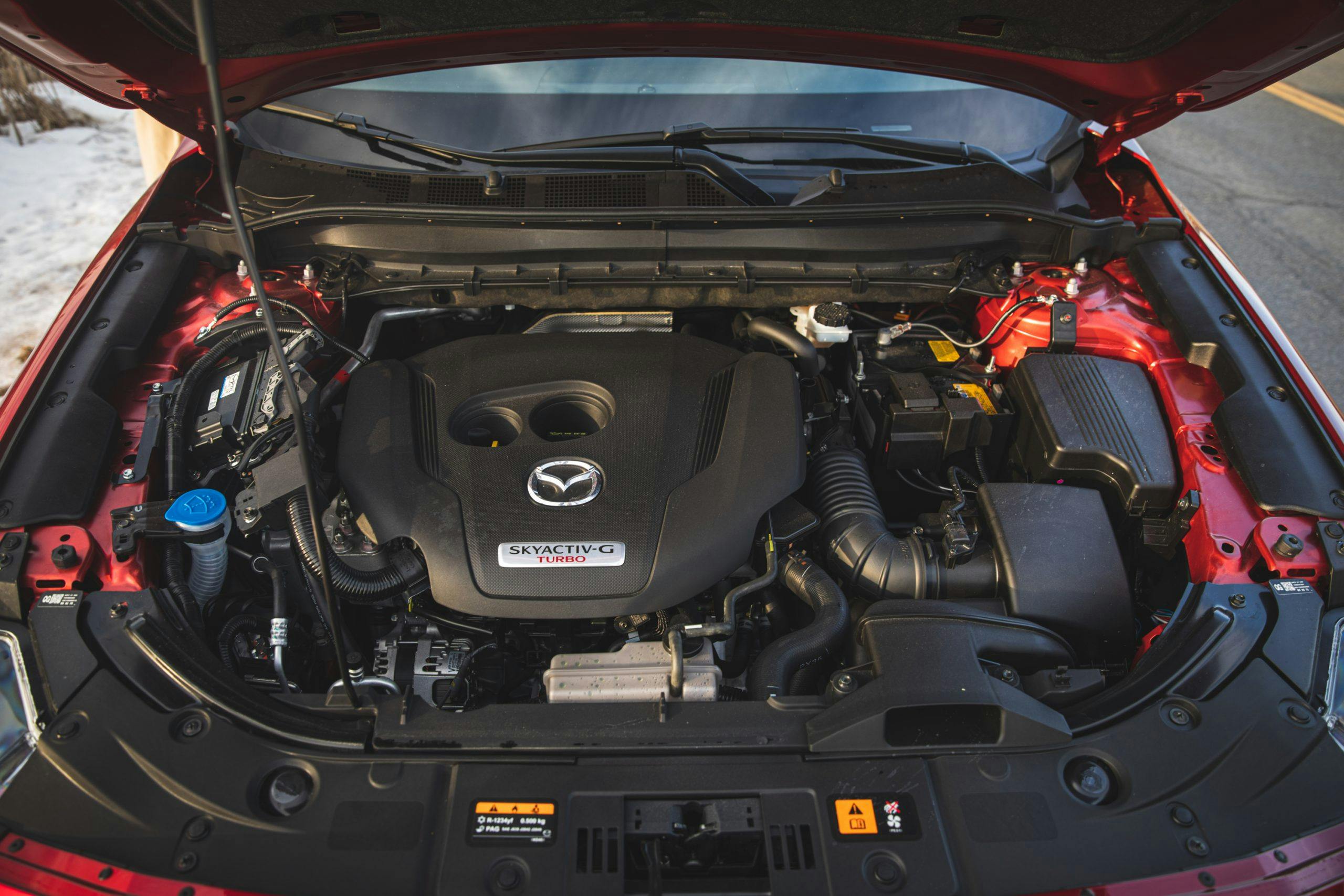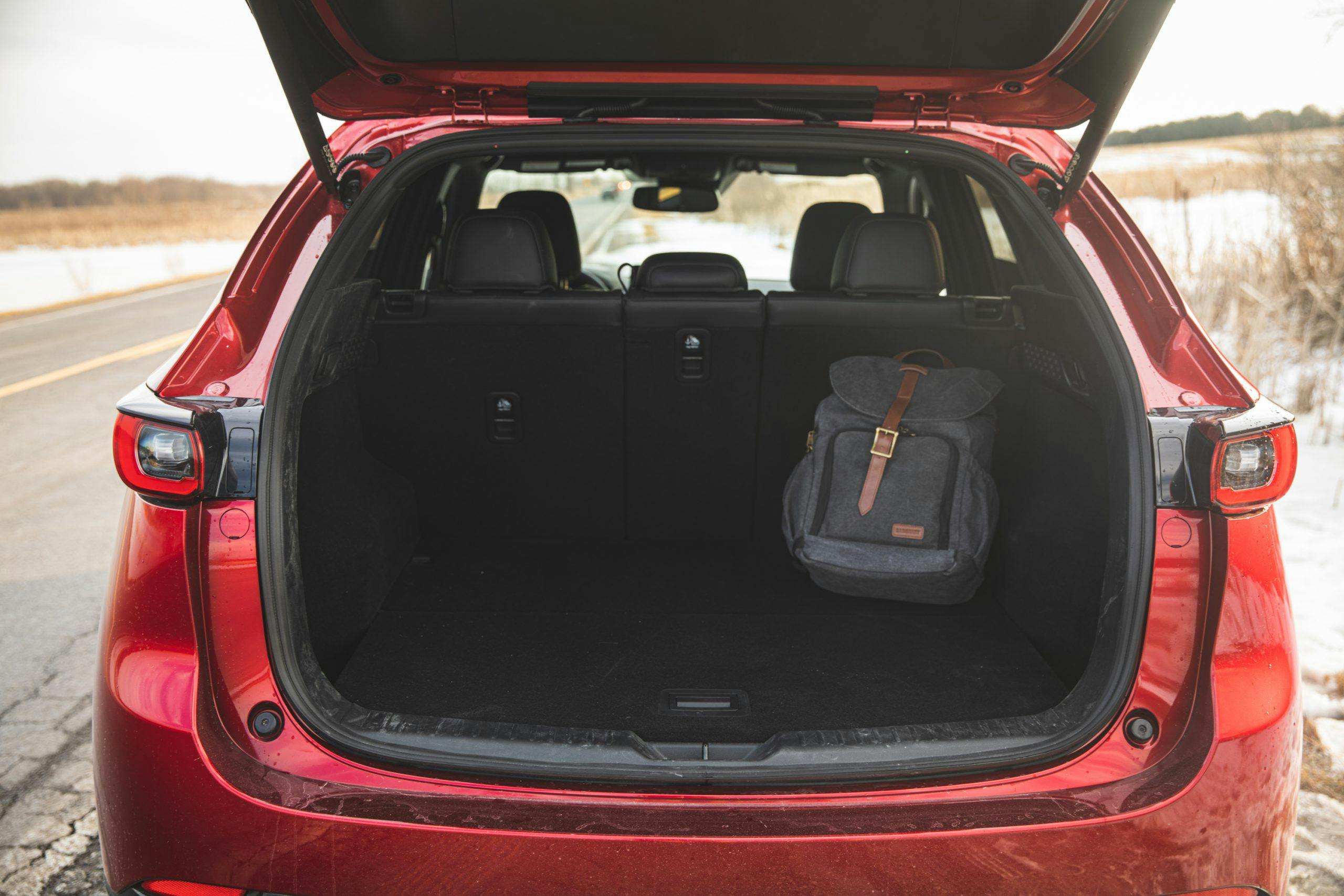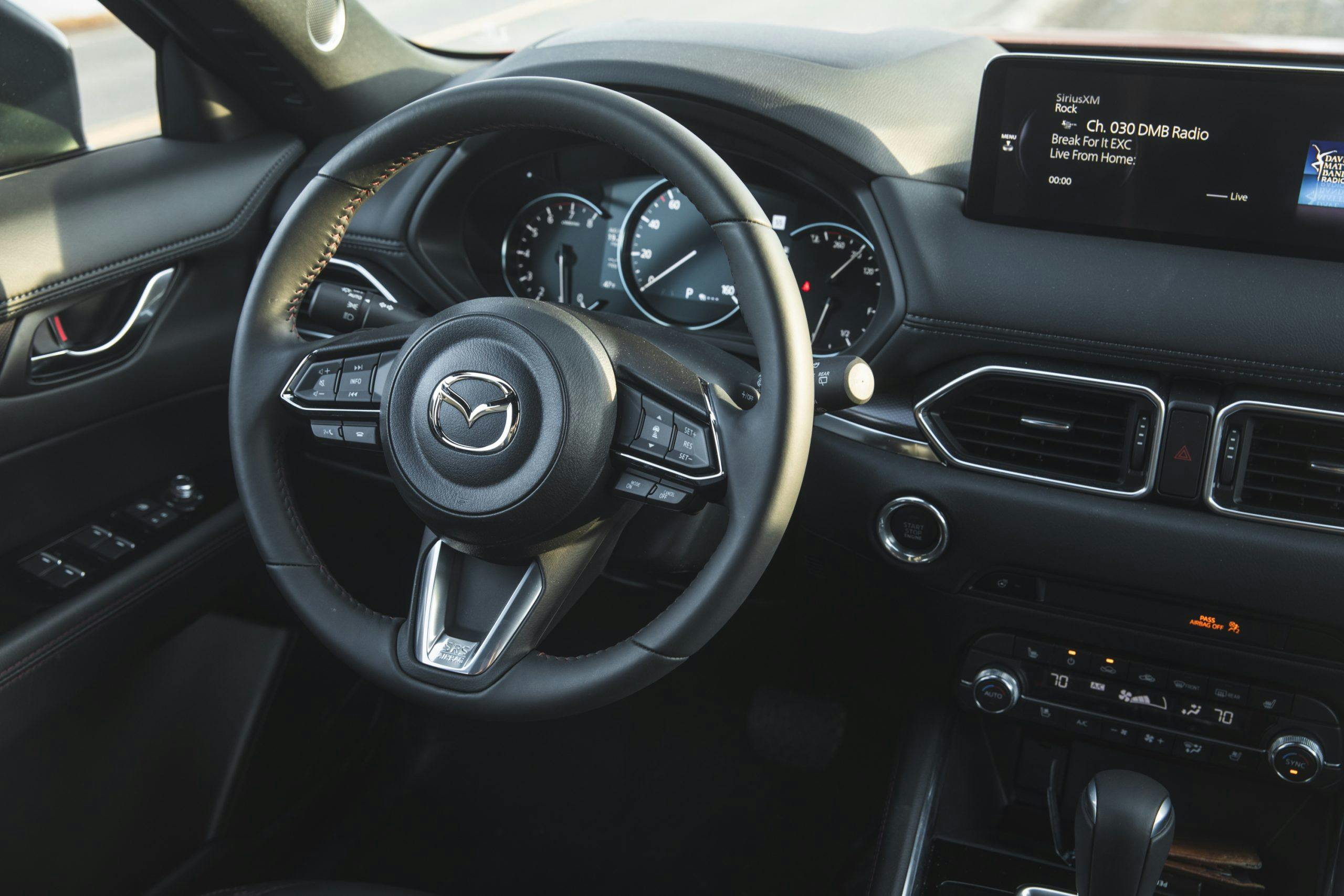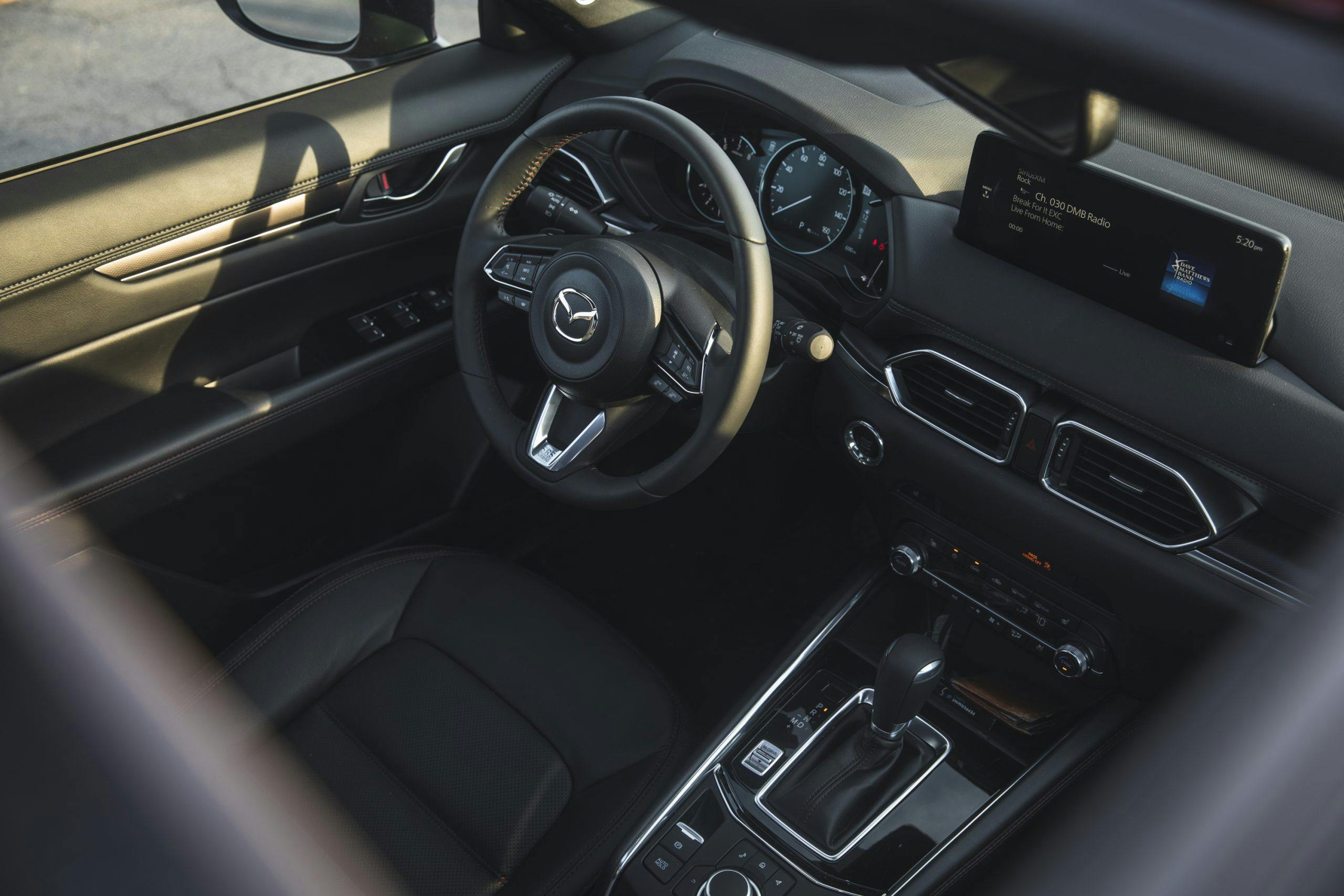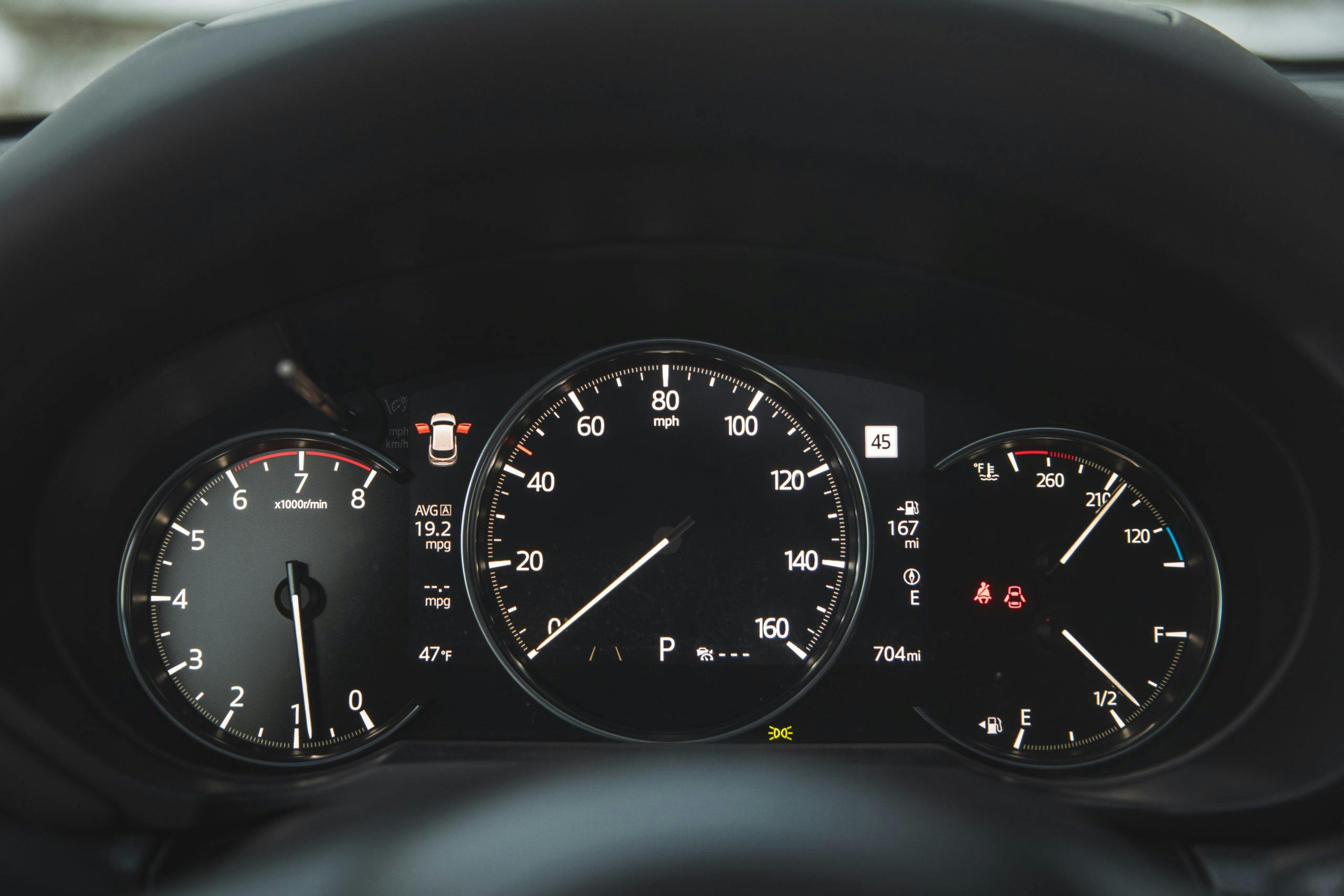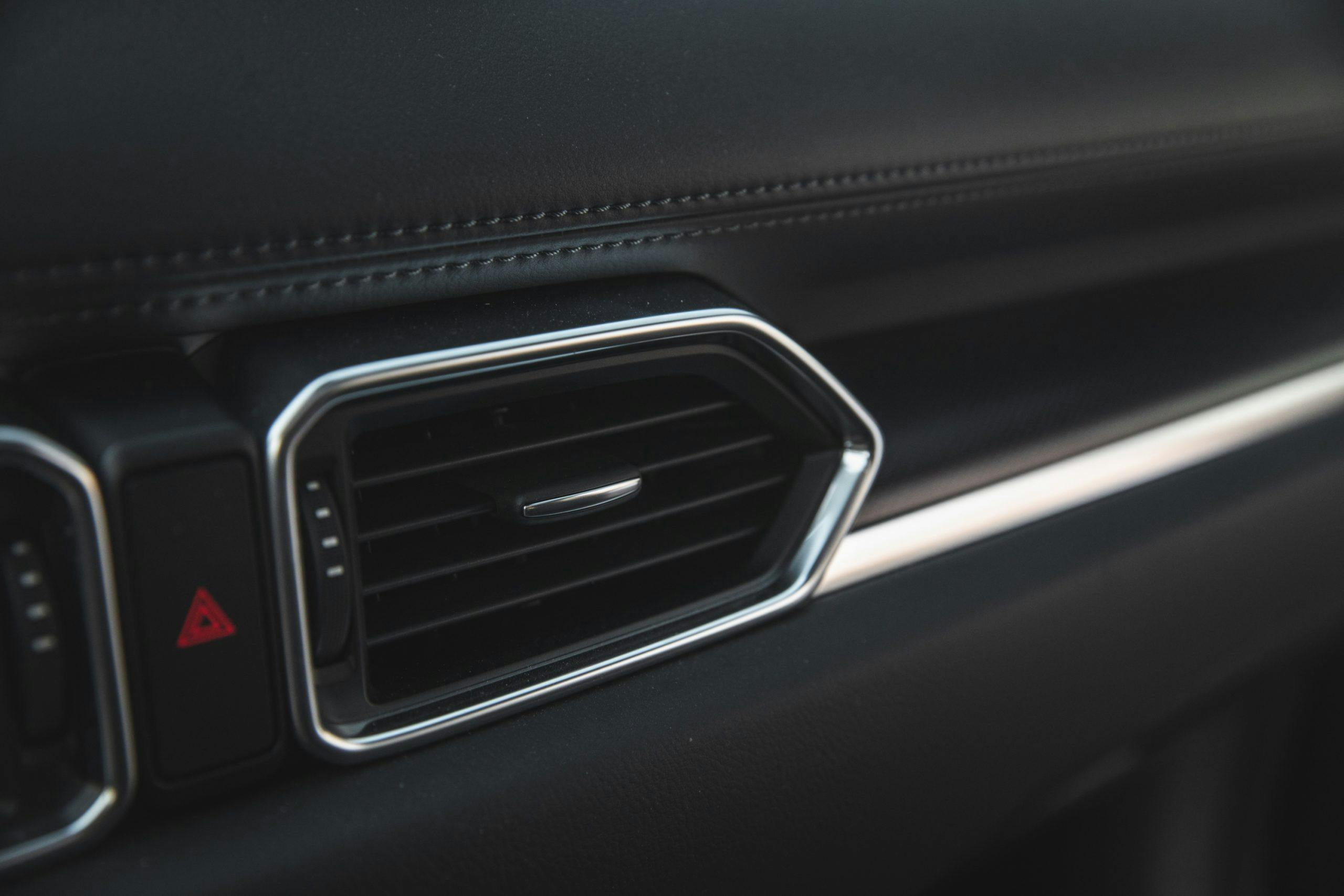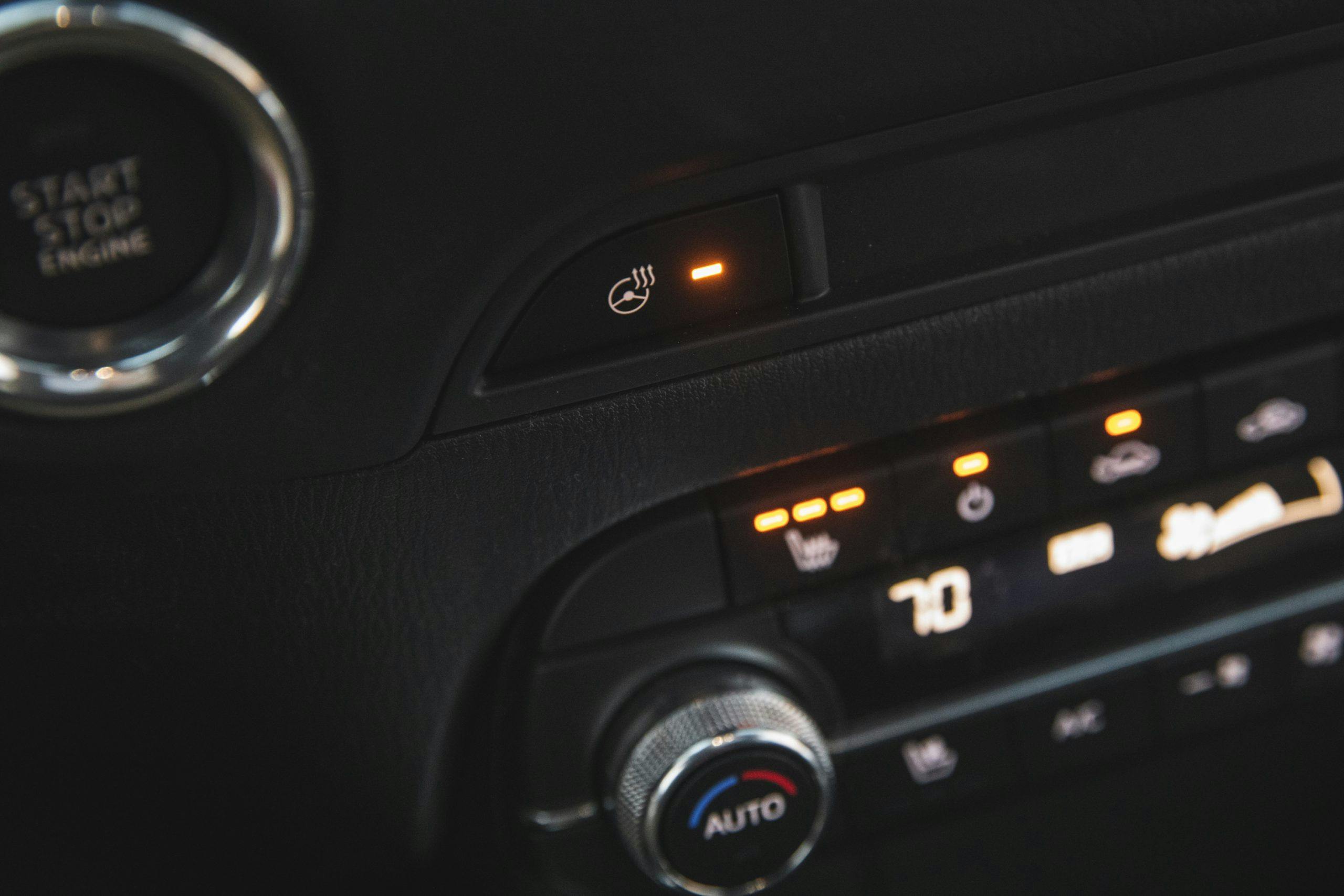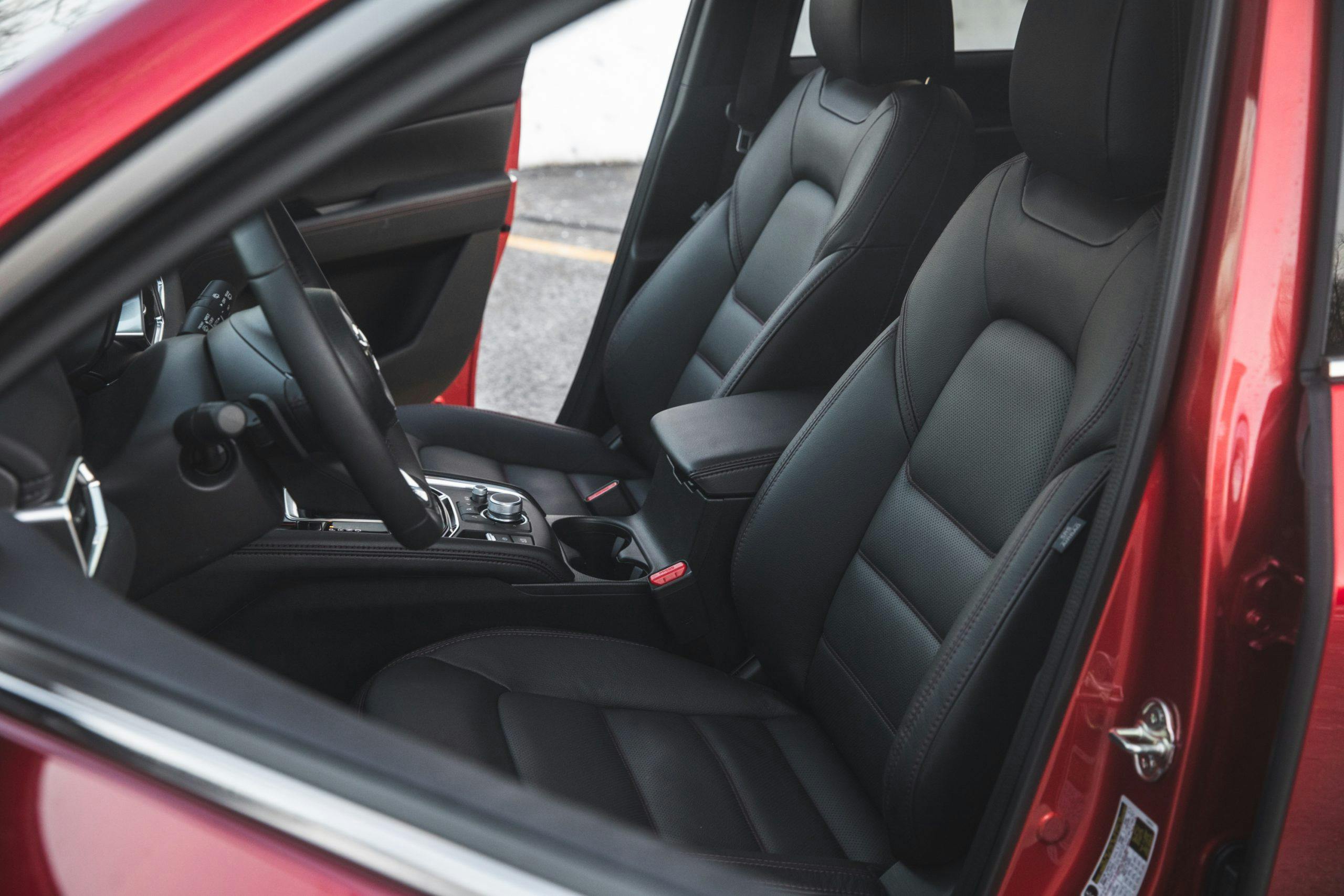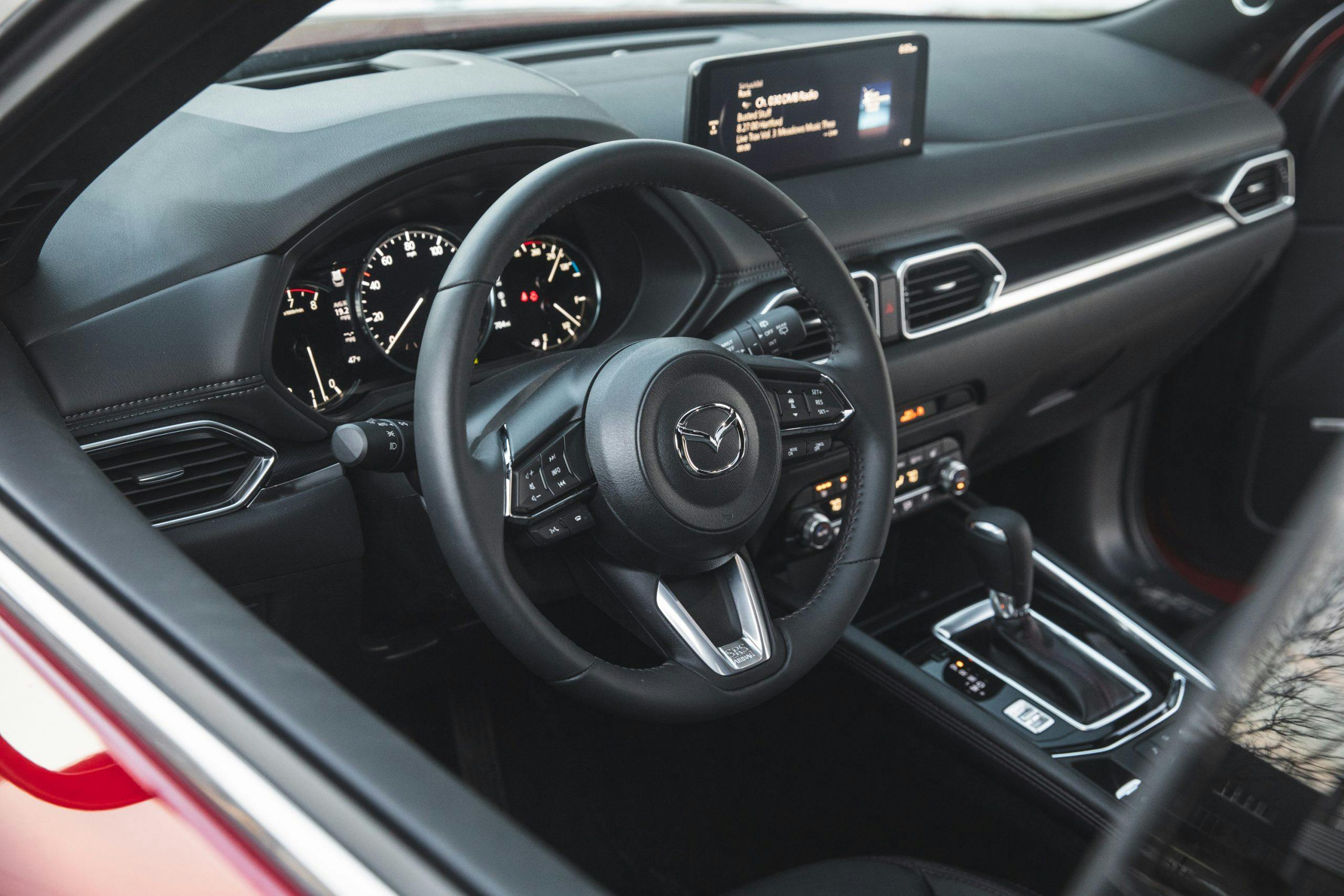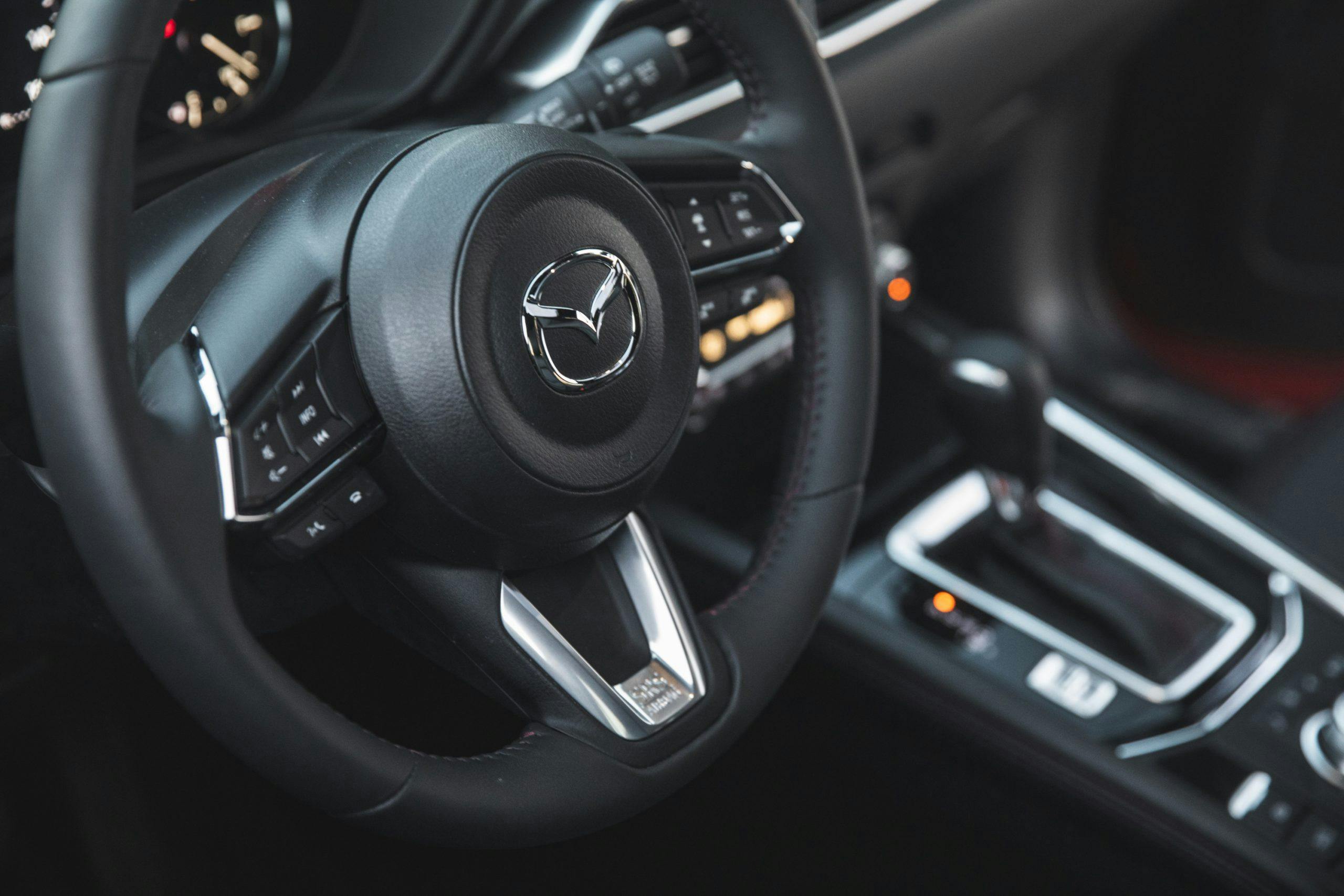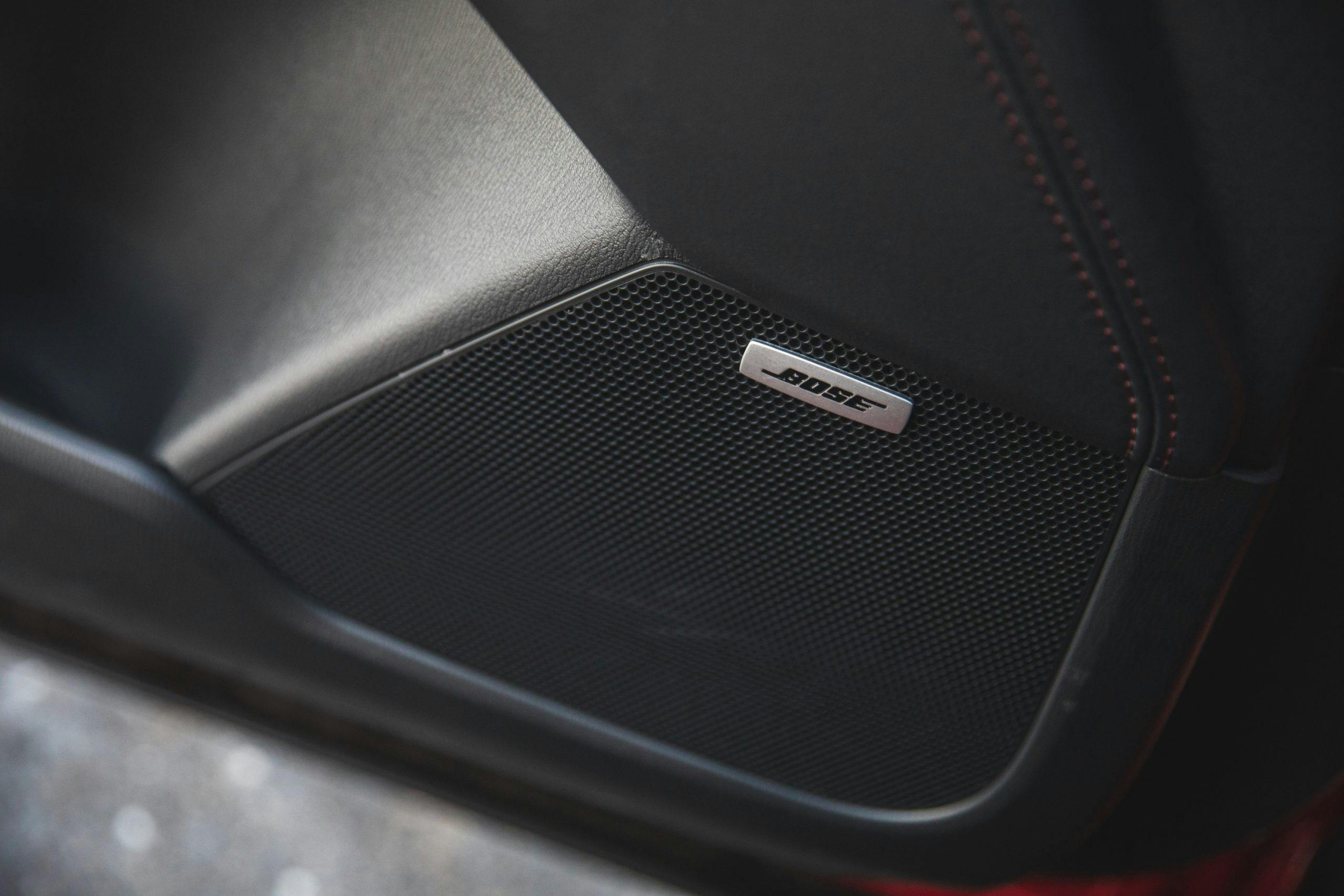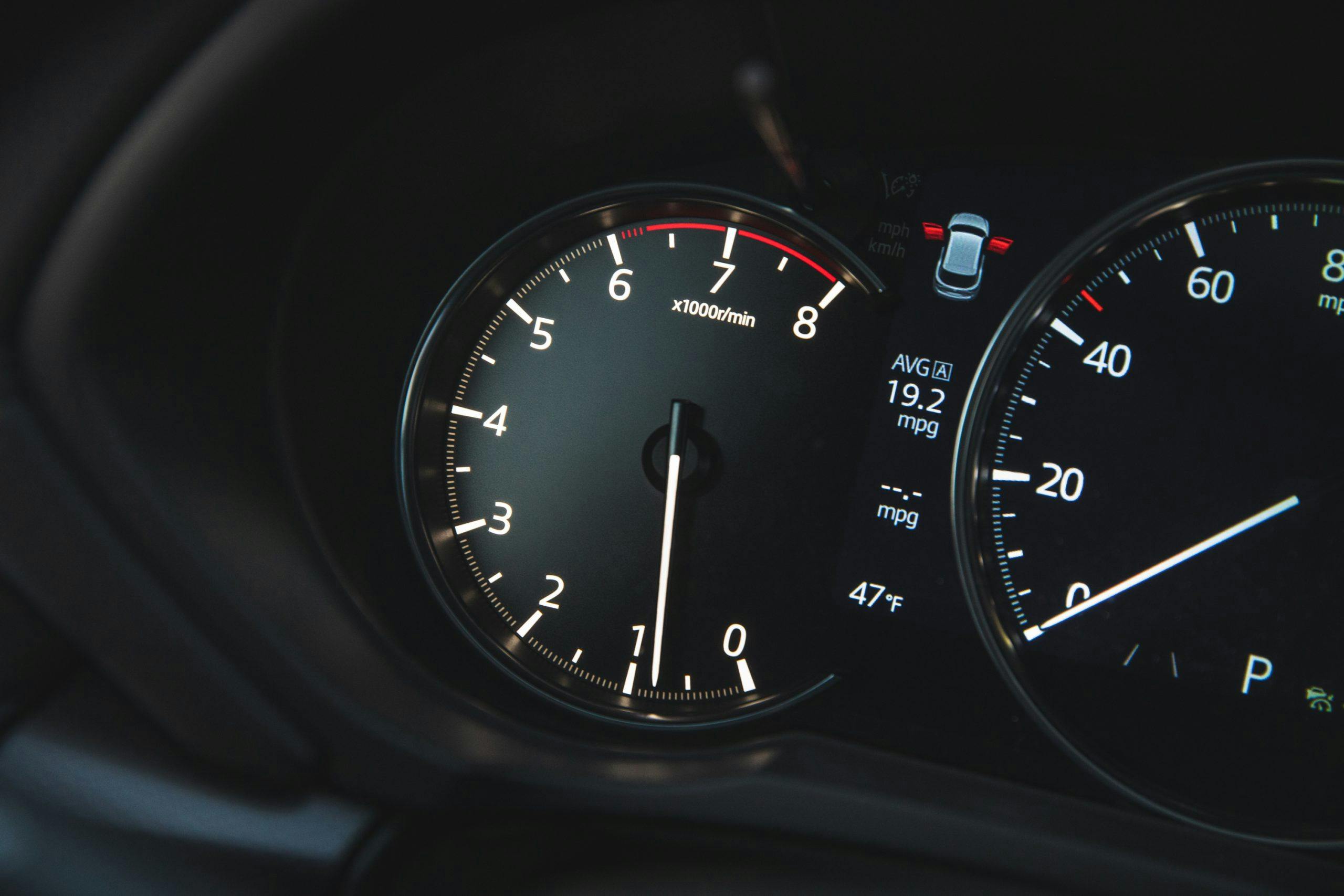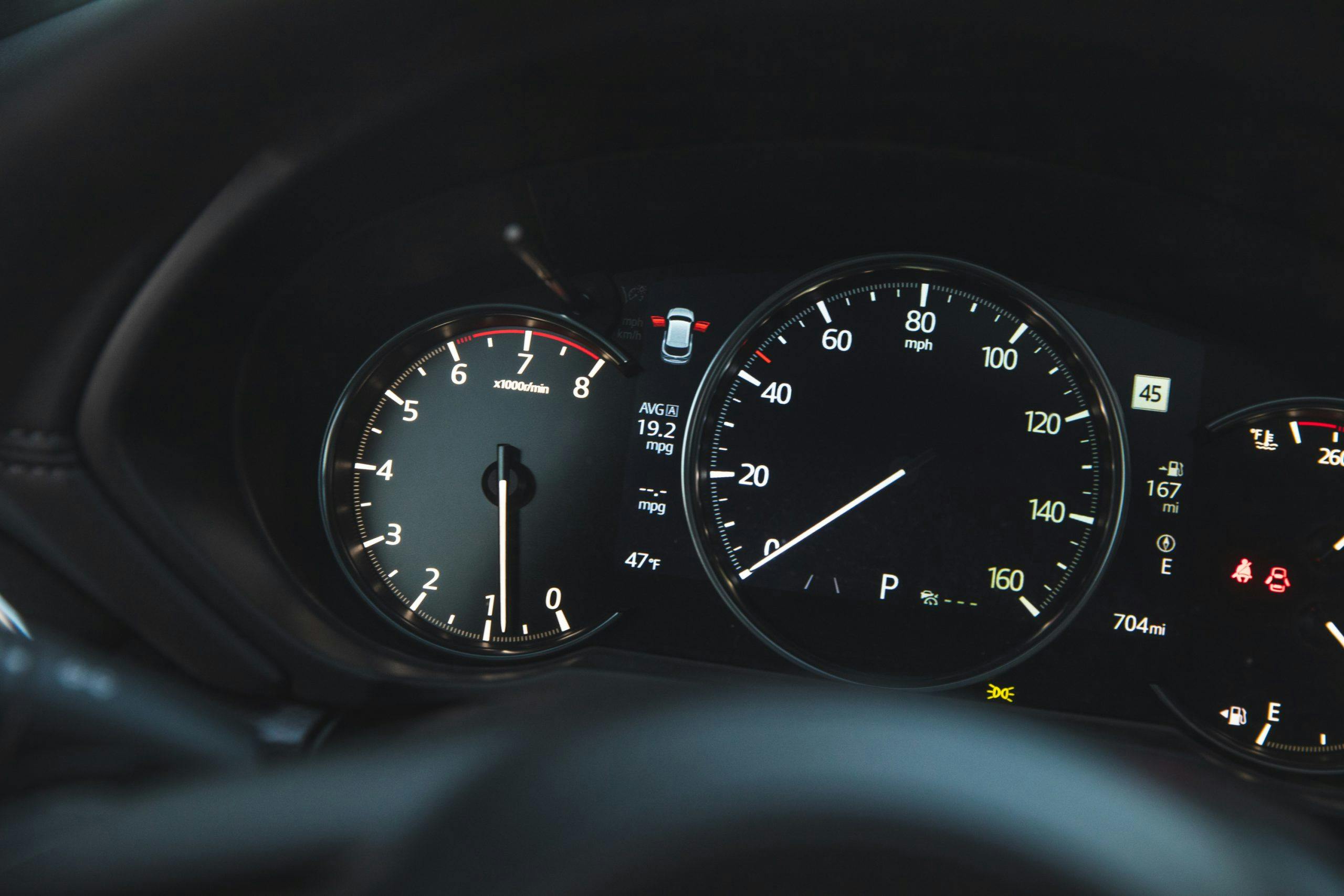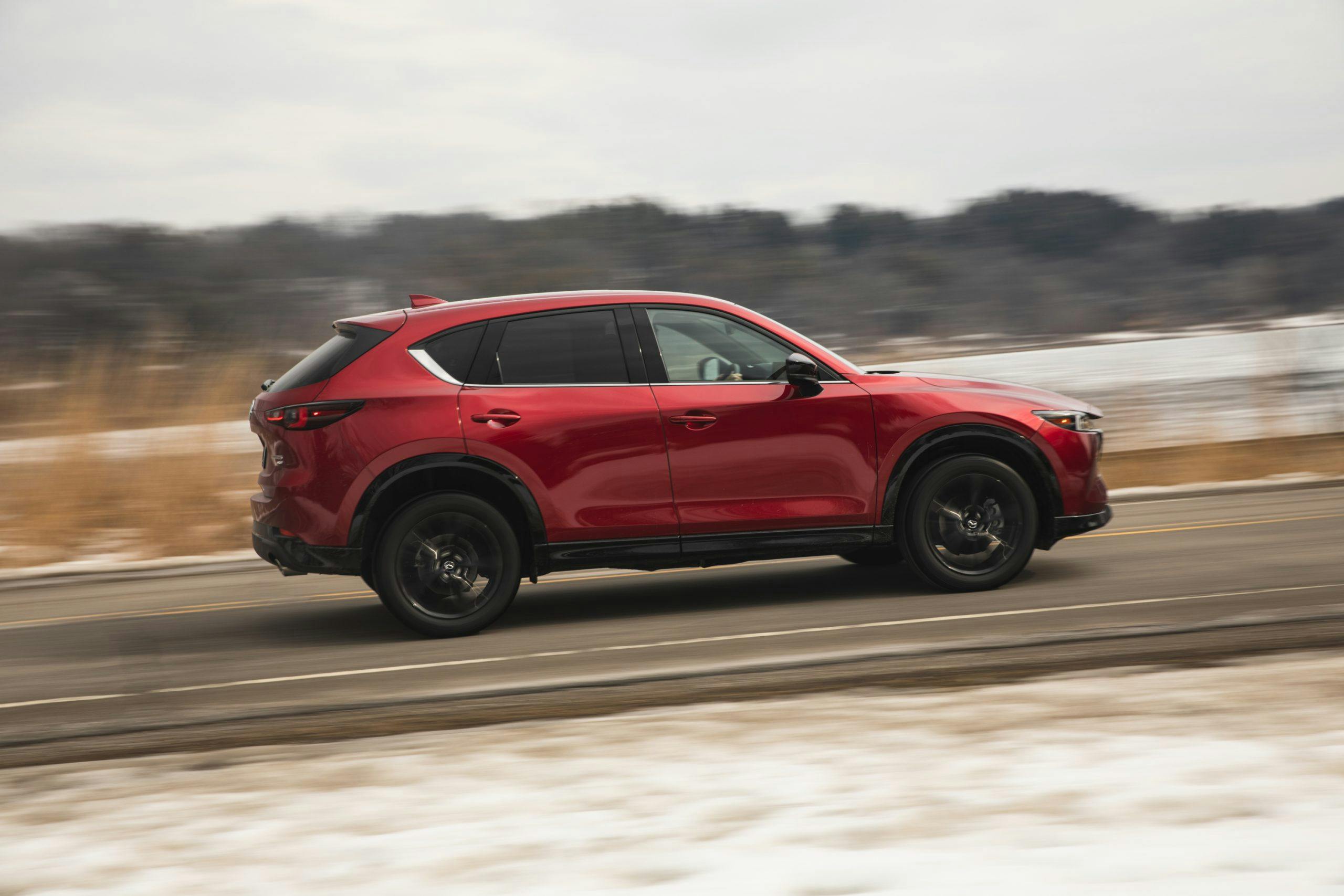Media | Articles
Review: Mazda CX-5 2.5 Turbo AWD
With Mazda, we tend to focus on the Miata. And for good reason! The Japanese roadster is one of history’s great sports cars, beloved for its simplicity and affordability. Miatas are fun cruisers, engaging canyon-carvers, and solid race cars. The model is deeply reflective of both Mazda’s enthusiast culture and engineering values.
Still, the Miata doesn’t pay the bills, at least not directly. The inarguable Sales Hero of Hiroshima is the Mazda CX-5. Depending on your perspective, that assertion likely strikes you as unsurprising, exasperating, or both. Compact crossovers are everywhere these days, and even if it occasionally seems that a quirky company like Mazda would rather sell sedans and hatchbacks (the excellent Mazda 3, for example)—all of which look better, handle better, and sip less fuel than their high-roof siblings—the bottom line doesn’t lie. Might as well embrace it.
This car is far and away Mazda’s best-seller. In 2013, the CX-5’s first full year on sale, almost 80,000 examples came to America. Volume has more than doubled since, with just shy of 164,000 CX-5s hitting our shores in 2021. Last year was the model’s strongest—still well behind the Honda CR-V (361,000) or Toyota’s mighty RAV4 (407,000), but damn respectable for a small company like Mazda.
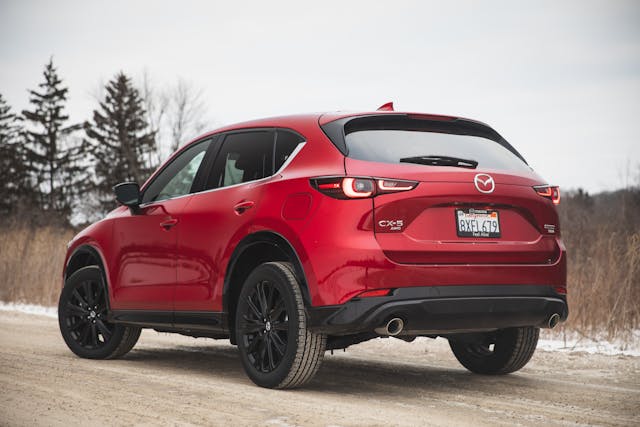
That number grows more impressive when you consider that the CX-5 is old as dirt in new-car terms, launched a decade ago and still using the same basic architecture. Think of this as the Dodge Challenger of compact crossovers: The older it gets, the more people seem to love it. So much, in fact, that Mazda plans to keep selling the CX-5 alongside the new CX-50, a compact crossover in the same class that is 1.5 inches lower, 6 inches longer, and styled in such a way as to blatantly target Subaru customers. If the CX-50 is aimed at customers looking to imply a more (gags) active lifestyle, the CX-5 will keep the traditionalists covered.
The CX-5’s basic platform is shared with the last-generation Mazda 3, dead since 2019. Like the Challenger, however, the CX-5 has seen meaningful and continual improvement since launch, including a major interior and exterior overhaul for 2017.
Marketplace
Buy and sell classics with confidence
The curvy design language here, which Mazda calls Kodo, has evolved from smiley and cute to sophisticated and mature. Where there was once only a strained, 155-hp 2.0-liter four under the hood, the CX-5 now offers a choice between a 187-hp 2.5 and a potent, turbocharged, 256-horse 2.5. Ride quality has improved, and a focus on sound deadening has eliminated the irksome highway wind noise of early models. All-wheel drive is now standard across all variants. Base pricing has crept from around $24,000 to just under 30 grand, but the top trim levels, closer to $40,000, now boast interior design and materials that wouldn’t be out of place in an entry-level luxury car. Mazda has tried to climb upmarket before, unsuccessfully, and the premium transformation here is evidence that the gambit finally grew teeth.
Perhaps the only constant in this story is how the CX-5 is and always has been the best-driving car in its segment. Our 2.5 Turbo tester continues that trend. It feels like a home-cooked meal—familiar, satisfying, and restorative. Next to this, a CR-V or Subaru Forester feels more like that flavorless, nutritious, dystopian slop they eat on the hovercraft in The Matrix. There is a wonderful alertness to the Mazda’s chassis, married to an equal measure of poise. Steering is natural, the brake pedal predictable and confidence-inspiring. The all-wheel drive system defaults to the front axle, and you rarely feel it chuck power to the rear except over loose surfaces or under heavy throttle.

This 2.5-liter turbo four is used elsewhere in Mazda’s lineup, but it only came to the CX-5 in 2019. It gains six horsepower for 2022. This engine also lives in the Mazda 3 Turbo and the three-row CX-9, and it feels pretty much the same in each application. Low-end torque has been optimized through tuning choices, with the 320 lb-ft peak arriving at just 2500 rpm. The result is a responsive, reassuring kick off the line and plenty of zip to redline. The total package won’t win any drag races, but the CX-5 nonetheless always has more grunt than it really needs. With the 2.5 Turbo starting at $36,750, just $2450 over a similarly equipped, 187-hp 2.5 S Premium Plus, shelling out for the boosted engine should be an easy decision.
One factor that aids the CX-5 Turbo’s sense of urgency is its six-speed automatic. Unlike many of the CVTs in the segment, the gearbox feels actually connected to the engine. The transmission never seems to be in any particular hurry, but it knows when to hold a gear and is always smooth. Tug on the left plastic shift paddle, you get a downshift without much delay, ideal for quick highway passes. Once upon a time, in a different world, Mazda offered this car with a six-speed manual, but almost nobody pulled the trigger for it, and the option was shelved for the model’s 2017 refresh. It’s a shame, because Turbo model would be even more fun with a stick and three pedals.
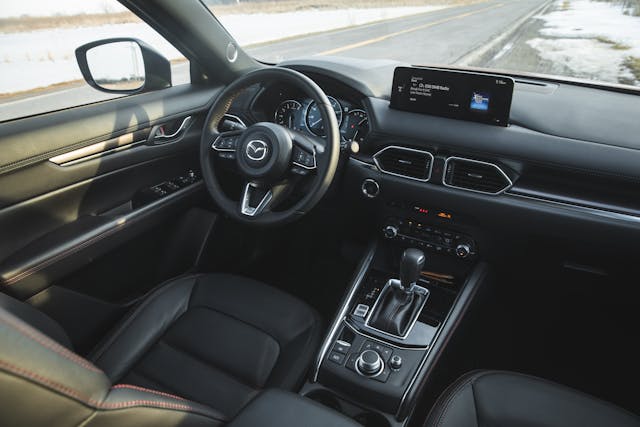
Formerly known as the Grand Touring Reserve, the 2.5 Turbo trim includes nearly every practical feature you could want as standard: adaptive LED headlights, leather seats with heating in both rows and ventilation up front, heated steering wheel, heated mirrors, an 8-way power driver’s seat with lumbar support, blind-spot monitoring, 10-speaker Bose sound system, and CarPlay/Android Auto. The options list on our press loaner consisted of just two line items: Soul Red Crystal Metallic paint and navigation. The former is absolutely worth the $595 upcharge; this gorgeous finish outshines anything in Audi or BMW’s current swatch set. The latter is only necessary if you drive frequently on remote roads outside of cell service, or if you just don’t want to run up a data plan. (And at $450, it might be the most reasonably priced nav unit in the industry.) Springing for the top-tier Signature trim adds Nappa leather as well as grained wood, but the Turbo’s cushy seats, plush armrests, and red stitching don’t leave you wanting.
Even the 10.25-inch screen is a joy here, if not solely because it works best with the car’s central rotary controller and not via touch. Not only does that controller feel natural, the screen remains free of oily finger smudges. The interface comes across as bland in graphics and menu design, which is a little out of sync with the consideration afforded to the rest of the interior. That said, the system works fine, and there’s nothing irritating about its use. This is rare in modern cars. The same goes for the instrument cluster, which is simple and easy to read at a glance. The small tray just forward of the shifter offers standard wireless phone charging.
For all the CX-5’s merits, generous rear-seat space has never been one of them. This is a major weakness in a segment where every inch of capacity matters to buyers. The back seat is a bit tight, especially compared to the enormous one in the similarly priced VW Tiguan, and the cargo area is too shallow for most large suitcases unless you fold the rear seats. Load height is high, as well. For families with young kids, strollers and the like will be a tough squeeze.
The CX-50 addresses these shortcomings, but at a cost; that model’s larger interior comes partly thanks to a more compact torsion-beam rear suspension, replacing the CX-5’s multi-link setup. (Nevertheless, in our first-look review of the CX-50, Senior Editor Brandan Gillogly remarked on the model’s lively chassis—still head and shoulders above the CR-V and Forester.)

Mazda seems to be genuinely committed to the CX-5’s continued existence—the model’s press release says it will “attract customers alongside new Mazda vehicles for years to come.” The cynical take here is that the CX-5’s primary tooling is long since paid for, which makes any sales basically gravy. But there’s no good reason to believe that as the whole truth. Steadily increasing sales suggest that a contingent of buyers, faced with no shortage of compact crossover options, are becoming enamored with the CX-5’s combination of style, luxury, and engaging dynamics.
The average American car shopper is, it turns out, a little slow on the uptake.
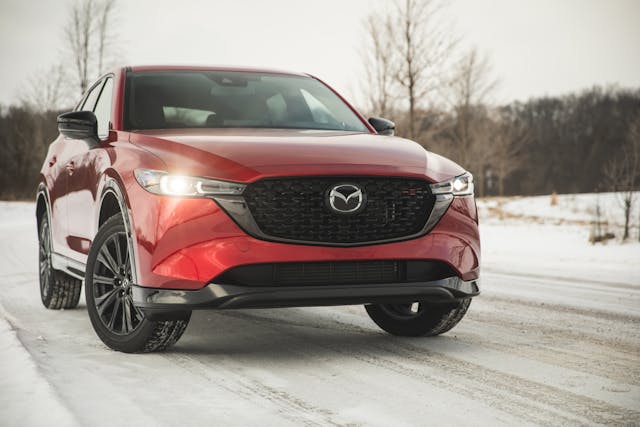
How long the CX-5 can really endure is anyone’s guess. Mazda already sells the smaller CX-30 (essentially a lifted Mazda 3 hatchback) below the CX-50. And it’s fairly easy to see how a savvy dealer might convince someone who walks in the door for a CX-5 to stretch their budget into the more spacious 50. One imagines the CX-5 people left behind as more discerning. Empty nesters or one-kid families, perhaps, more comfortable with an established entity that’s simply more pleasurable than any of its rivals.
A niche player that paved the way for its creator’s march to success.
There’s a bit of Miata in the Hero of Hiroshima, after all.
***
2022 Mazda CX-5 2.5 Turbo AWD
Price: $37,975 / $39,020 (base / as-tested)
Highs: Upscale looks, great interior, unparalleled driving dynamics in the class. Punchy powertrain, too.
Lows: Not the most high-tech or the most fuel-efficient. Limited back seat and trunk space will be a deal-breaker for some.
Summary: As long as the CX-5 is around, the compact-crossover segment isn’t entirely joyless. The Turbo convinces that Mazda’s premium play is for real.

